CHINESE GARDENS AND HISTORIC WATER STREETS: THE HIGHLIGHTS OF SUZHOU
Described by the Chinese as the “Venice of the East,” Suzhou is considered one of the most beautiful and picturesque cities in all of China. The city is a source of national pride thanks to its wonderful gardens and its ancient waterways, which attract multitudes of visitors from all over the World.
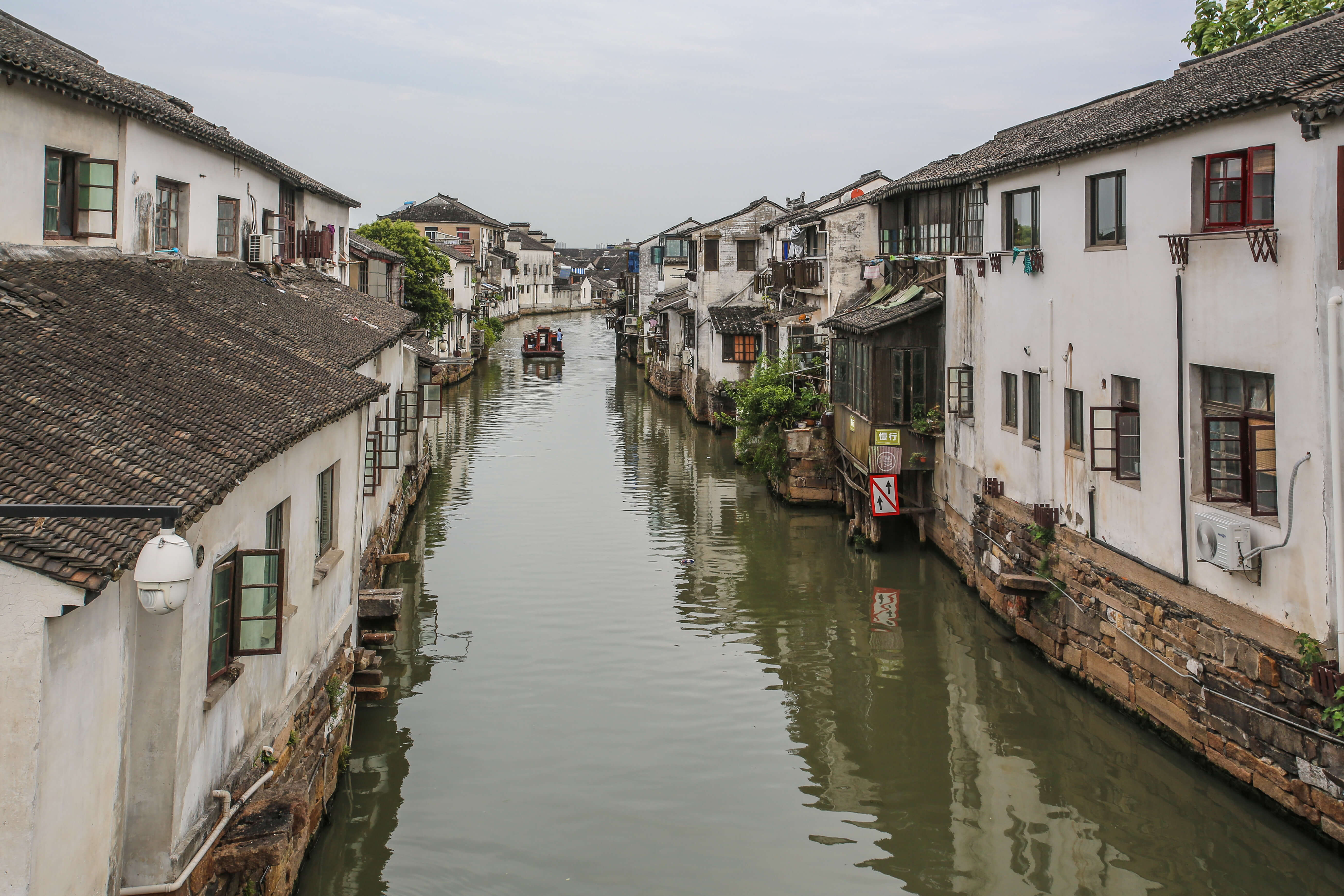
The city has a rich history of over 2500 years, as it developed into an important commerce hub due to its position along the Grand Canal (an artificial canal that connected Hangzhou to Beijing with the aim of bringing supplies of goods and food to the Imperial Capital). With this strategic location, Suzhou has developed over the centuries to distribute goods throughout China.
It began as an important commercial and storage hub for grain, and later became one of the main centers for silk production. The silk business drew merchants, aristocrats and artists from all over the world, and the city prospered. These wealthy men flaunted their wealth by building many beautiful palaces and elegant gardens for themselves, which guaranteed the city a place of supremacy for beauty and culture throughout the nation. Today some of them are preserved as Wold Cultural Heritages Sites by UNESCO.
Walking through the streets of Suzhou, advertised as one of the most idyllic places in China, it must be admitted that it has lost part of its ancient picturesque charm.
There are some of the original ancient waterways crossed by humpback bridges, lined with decaying traditional buildings, but it is confined to limited areas of the city center. Many of these canals have in fact been closed or filled in to build roads and much of the historical fabric has been replaced by modern residential and commercial buildings.
I have visited this city several times over the years and every time I find myself imagining how fascinating this city must have been before it was partly transformed into a modern city and tourist destination.
What remains of these ancient waterways and the many gardens (about 70, of which 9 are listed as UNESCO World Heritage Site) today are the main tourist attractions of the old part of the city. Tarnished but still beautiful, this picturesque place once inspired the saying: “In heaven there is paradise, on Earth there are Hangzhou and Suzhou”.
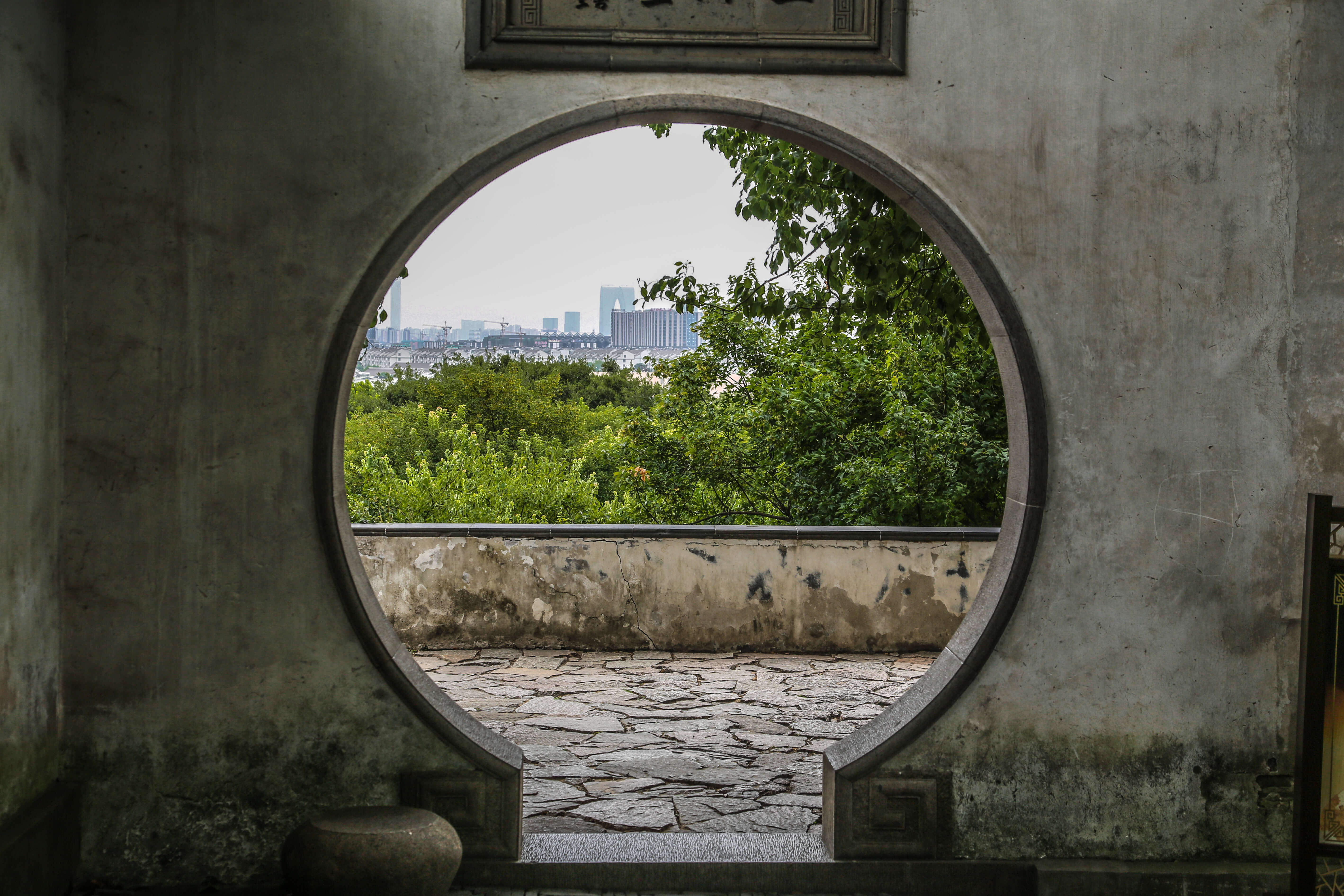
THE MOST BEAUTIFUL CHINESE GARDENS IN ALL OF CHINA
The main reason to visit Suzhou is to tour its magnificent gardens, famous throughout the World for their beauty. In Suzhou, it is in fact possible to visit some of the most impressive examples of the artistry of Chinese Gardens, a form of design that cannot be missed, in my opinion, if you are interested in traditional Chinese art and architecture.
THE CHINESE GARDEN
Chinese gardens are meticulous works of Art, subtle and nuanced, which follows very precise rules, with the aim to create a landscape that always gives different views, suggestions, and inspirations to the viewer.
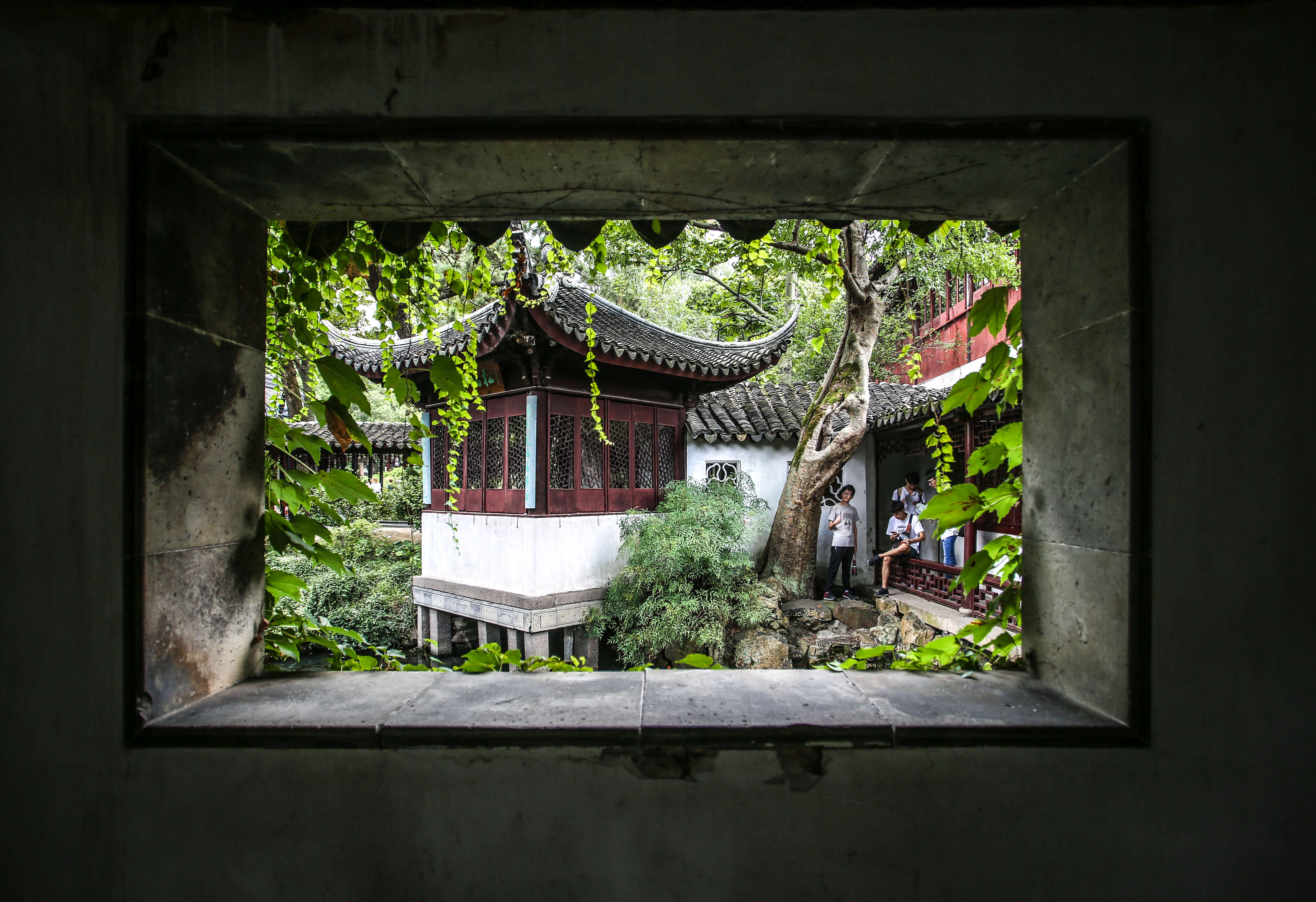
Chinese gardens can be diversified by size, theme, and features, and can be grouped into three main categories:
– Imperial Chinese Gardens: mostly located in the northern regions, this type of garden is usually vast and characterized by grandeur and classical formalism, and manifests the desire to express prestige and wealth of the imperial family.
– Private Gardens: smaller and more intimate, this kind of garden usually belong to poets, former government officials, merchants, and scholars with the aim of creating a place of peace, tranquility, and harmony to escape from the bustle of the city and take refuge in a natural solitude.
– Natural Scenic Parks: located through all China and built for the public, this kind of garden includes a variety of viewpoints, temples, monasteries, and halls of the ancestors and scenic routes.
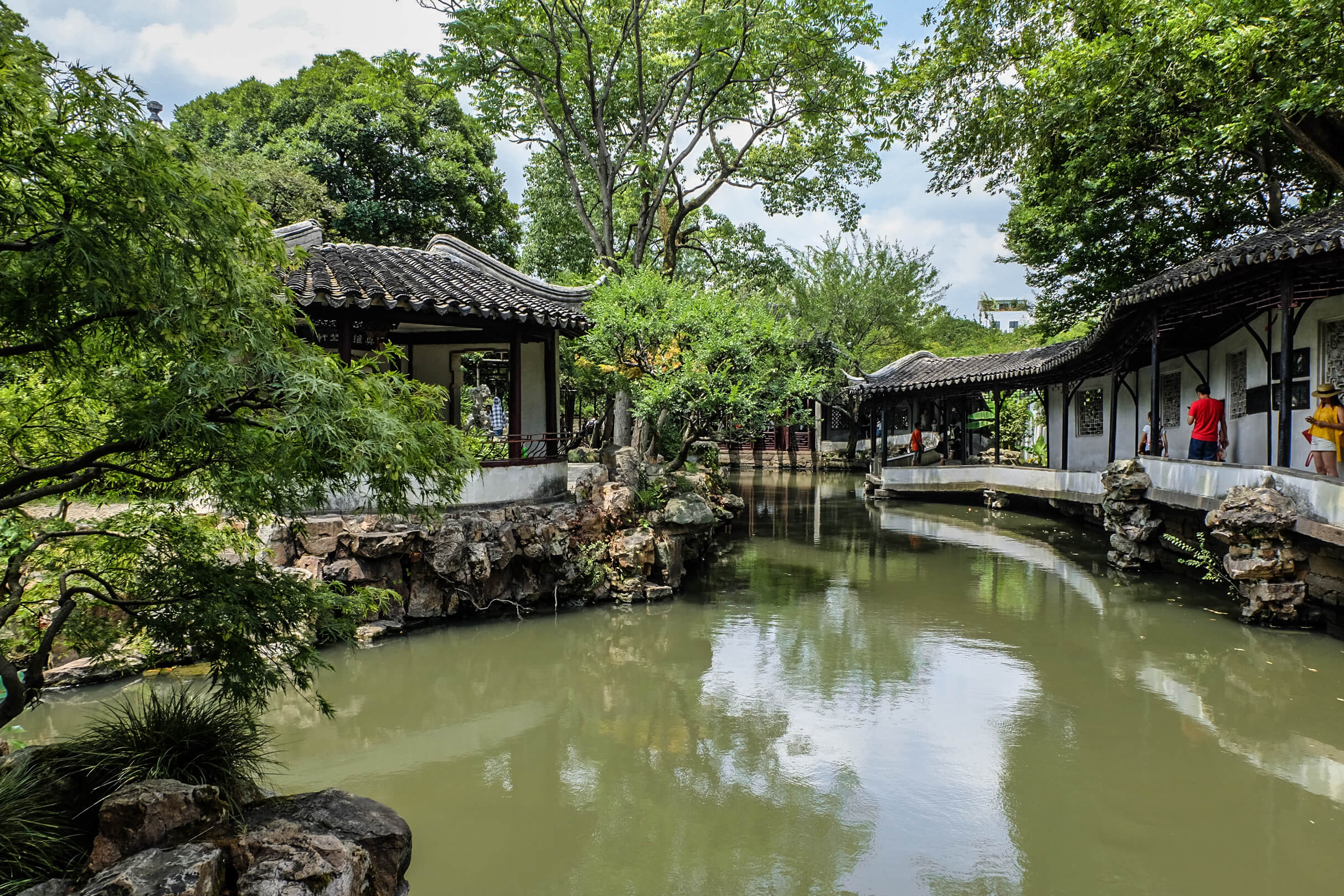
A typical Chinese garden is enclosed by walls and includes one or several ponds, rocks and hills, an abundance of trees and a variety of plants species, co-existing harmoniously with some small architectures. These small buildings can be halls and pavilions, and can be left standing alone or connected by covered walkways and galleries.
Usually the major architectures stand close to the water.
The small lake, which can branch out into smaller ponds or canals, can be surrounded by galleries, which allow the spectator to enjoy views from particular points of view and carefully chosen angles. Lakes are created next to mountains of stone, so that the softness of the water contrasts with the solidity of the rocks.
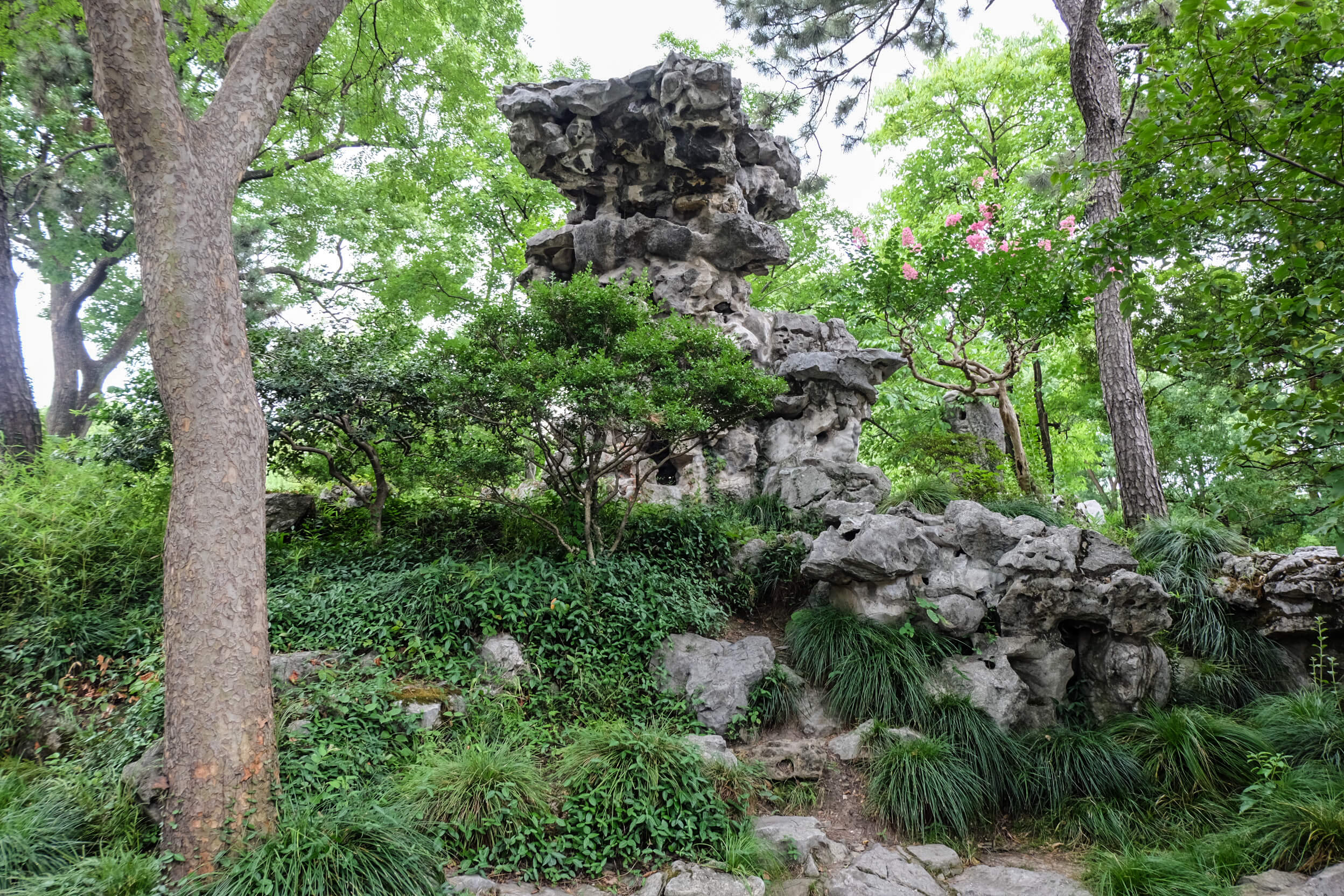
There are two ways to look at a Chinese garden: while moving or being still. To achieve that, the garden should provide observation points where the observer can enjoy pleasant angles while sitting and relaxing, as well as unique views that can be appreciated while walking and enjoyed little by little in the act of moving. These points of observations are usually accessible by bridges, paths and zigzag walkaways, which lead from one point to another.
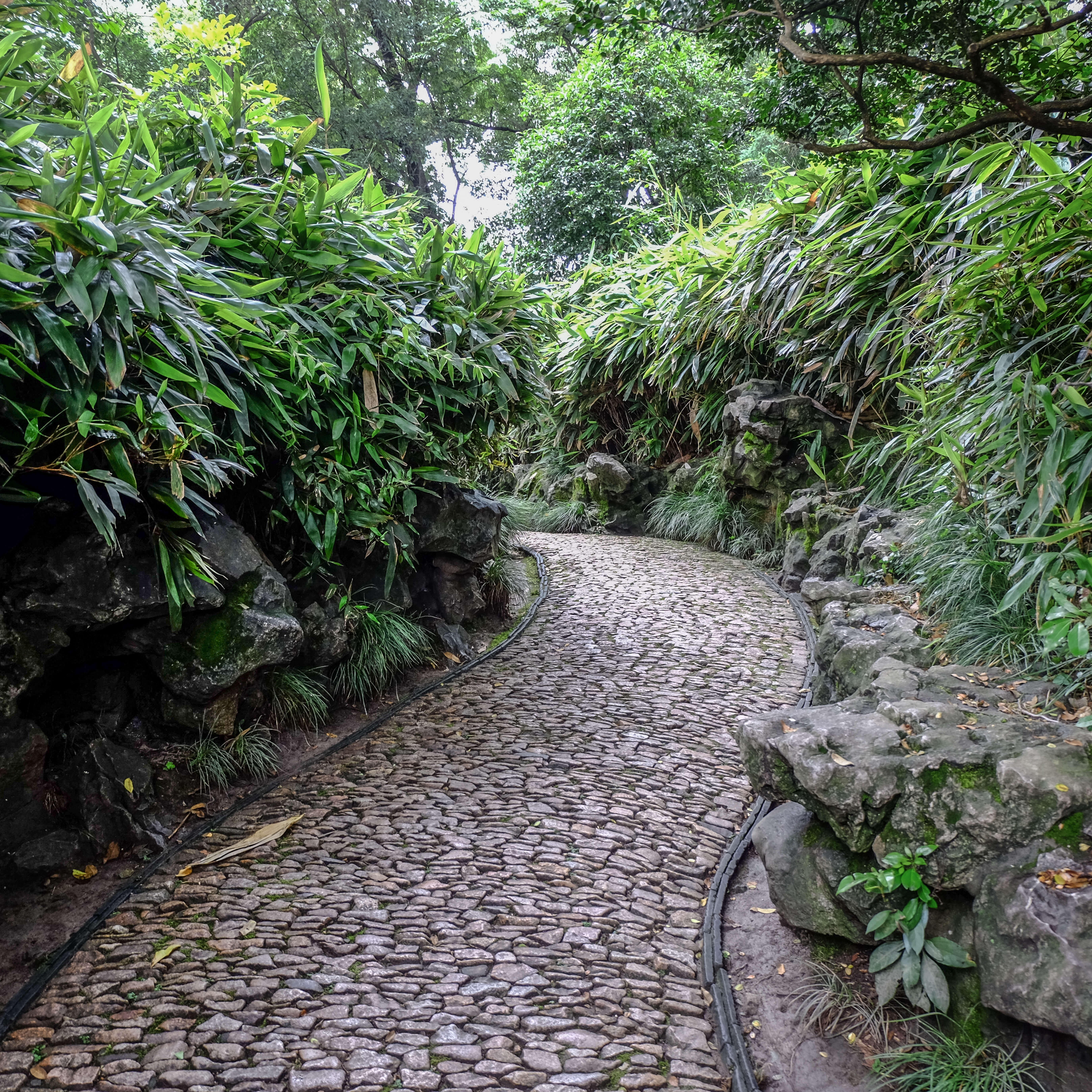
Every part of the garden is carefully placed, allowing the visitor to follow a particular direction or movement, to direct the eyes in a specific direction, leading their attention toward the top of a hill, the bottom of a mountain etc…
It is a very subtle and complicated form of art indeed!
THE MOST BEAUTIFUL GARDENS IN SUZHOU
Entering the gardens of Suzhou is like entering another world, where the traffic and noise of the modern city disappears.
A peaceful world where the natural and the architectural elements are carefully designed to express artistry at its highest form.
There are 69 beautiful Chinese gardens in Suzhou. Among them, the ones listed as UNESCO World Heritage Sites are:
-The Humble Administrator’s Garden (Suzhou’s biggest garden) (拙政园 – Zhuō zhèng yuán)
– Master of the Nets Garden (Suzhou’s smallest garden) (网师园 – Wǎng shī yuán)
– Canglang Pavilion (Suzhou’s oldest garden) (沧浪亭 – Cāng láng tíng)
– Lion Forest Garden (狮子林 – Shīzi lín)
– Lingering Garden (留园 – Liú yuán)
– Mountain Villa with Embracing Beauty (环秀山庄 – Huán xiù shānzhuāng)
– Couple’s Retreat Garden (耦园 – Ǒu yuán),
– Garden of Cultivation (艺圃 – Yì pǔ)
– Retreat and Reflection Garden (退思园 – Tuì sī yuán)
If you are short on time or you just want to have a taste of the gardens before getting burned out by too many water pavilions and lotus ponds, I suggest you pay a visit to at least a couple of them to appreciate the nuances and variations of this sophisticated art form.
Among all the gardens that can be admired in Suzhou, the most famous and the first choice of most visitors is the Humble Administrators Garden.
Built in 1509, it is the largest garden (5.6 hectares) in Suzhou, and is considered the most splendid example of its kind, a true masterpiece of the Ming Dynasty’s garden landscaping.
Due to this beauty and popularity, it’s constantly stormed by tourists, so expect hundreds of people around you!
Entrance ticket price: 70 rmb
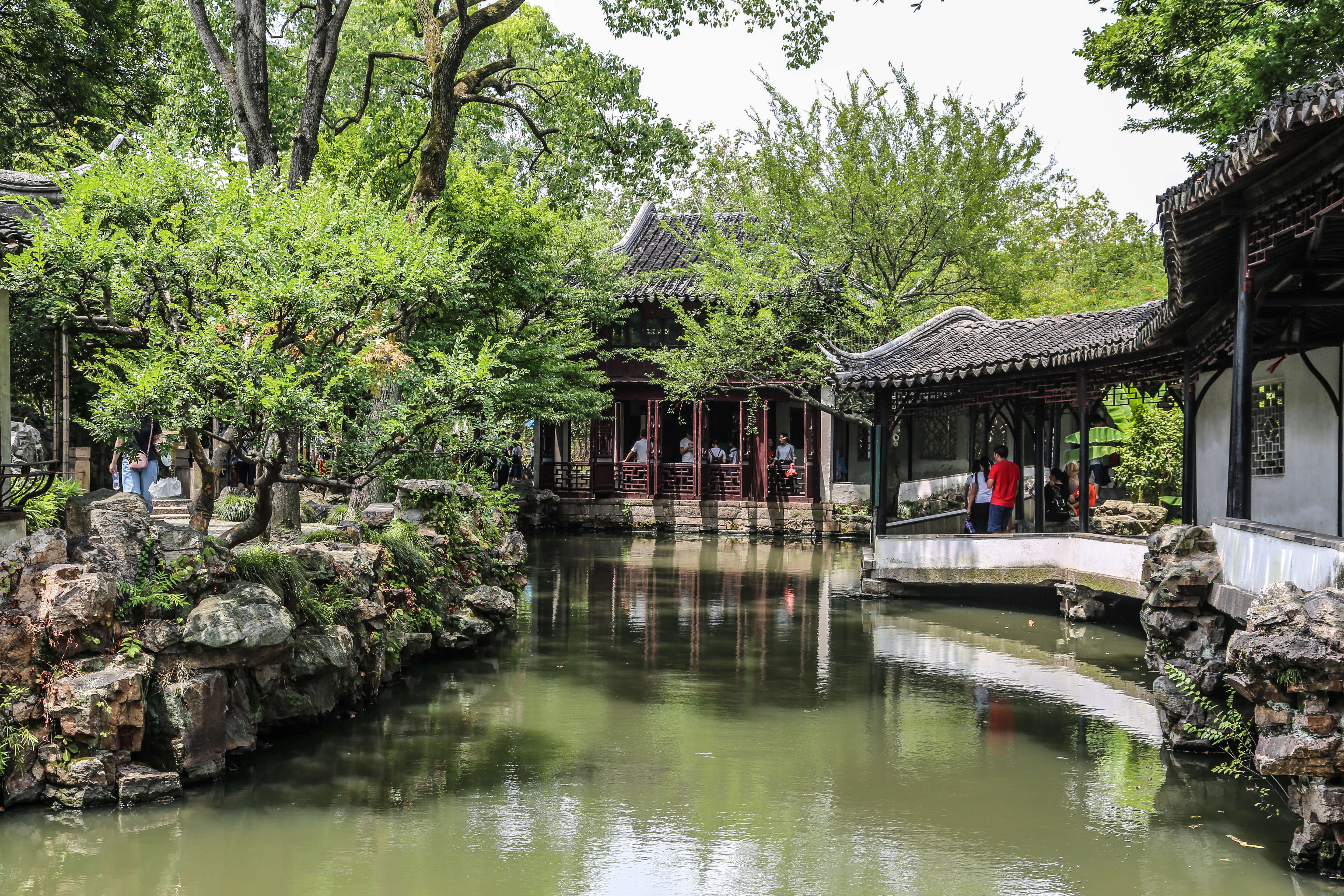
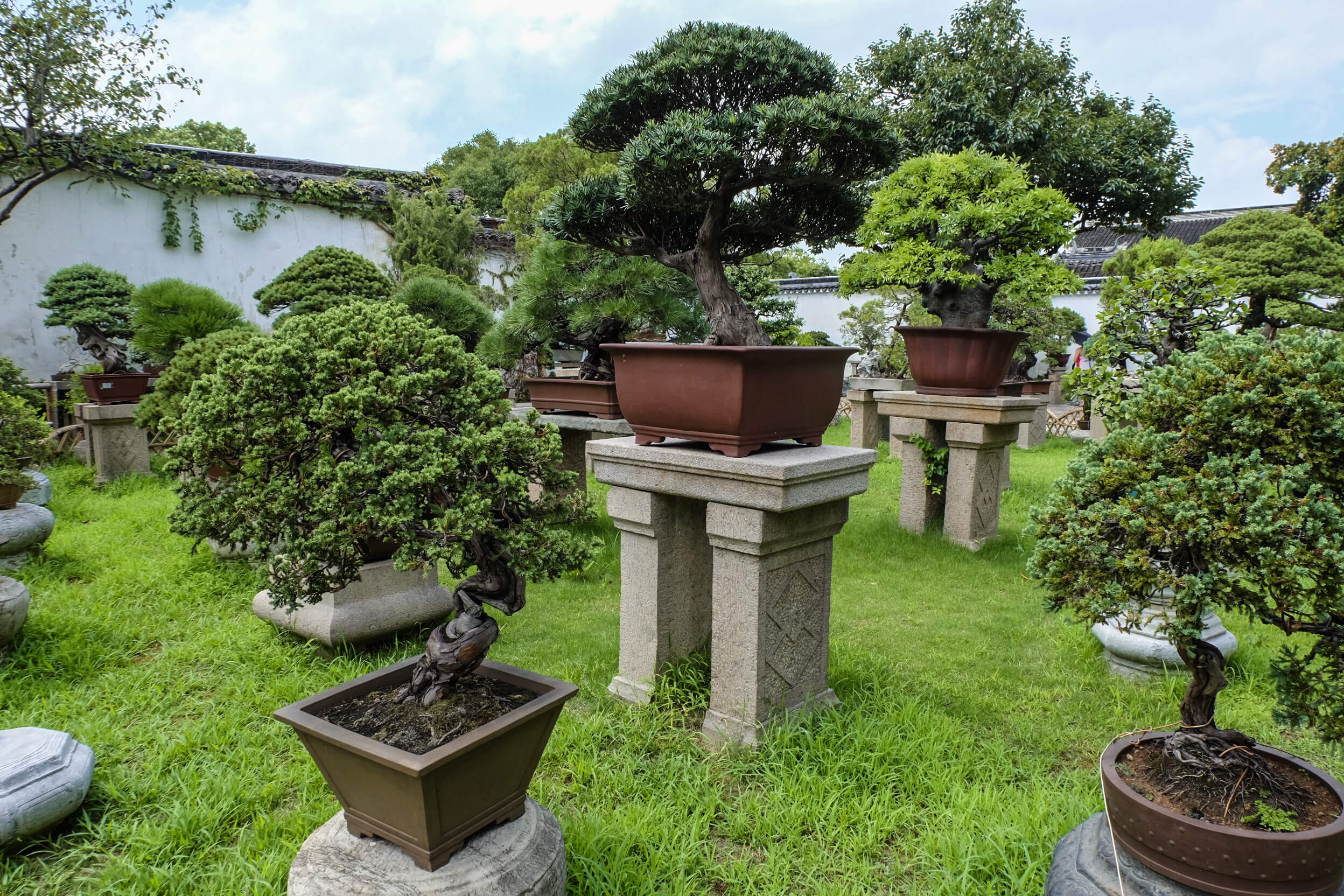
If you are looking for a very unique garden, the Lion Forest Garden is the way to go in my opinion.
Be prepared to lose yourself in small paths leading to narrow caves, go up and down on stairs, cross bridges between bamboo trees and cobbled corridors, and navigate a labyrinth carved into the stone, which surrounds a pond that is full of colorful carp and lotus flowers.
This place used to be the ancestral family home of the architect I.M. Pei (whose masterpiece, the Suzhou Museum, is just few hundreds meters away).
Wandering in this garden made me think about how such a space can be an endless source of adventures in the wild imagination of childhood.
Entrance ticket price: 30 rmb
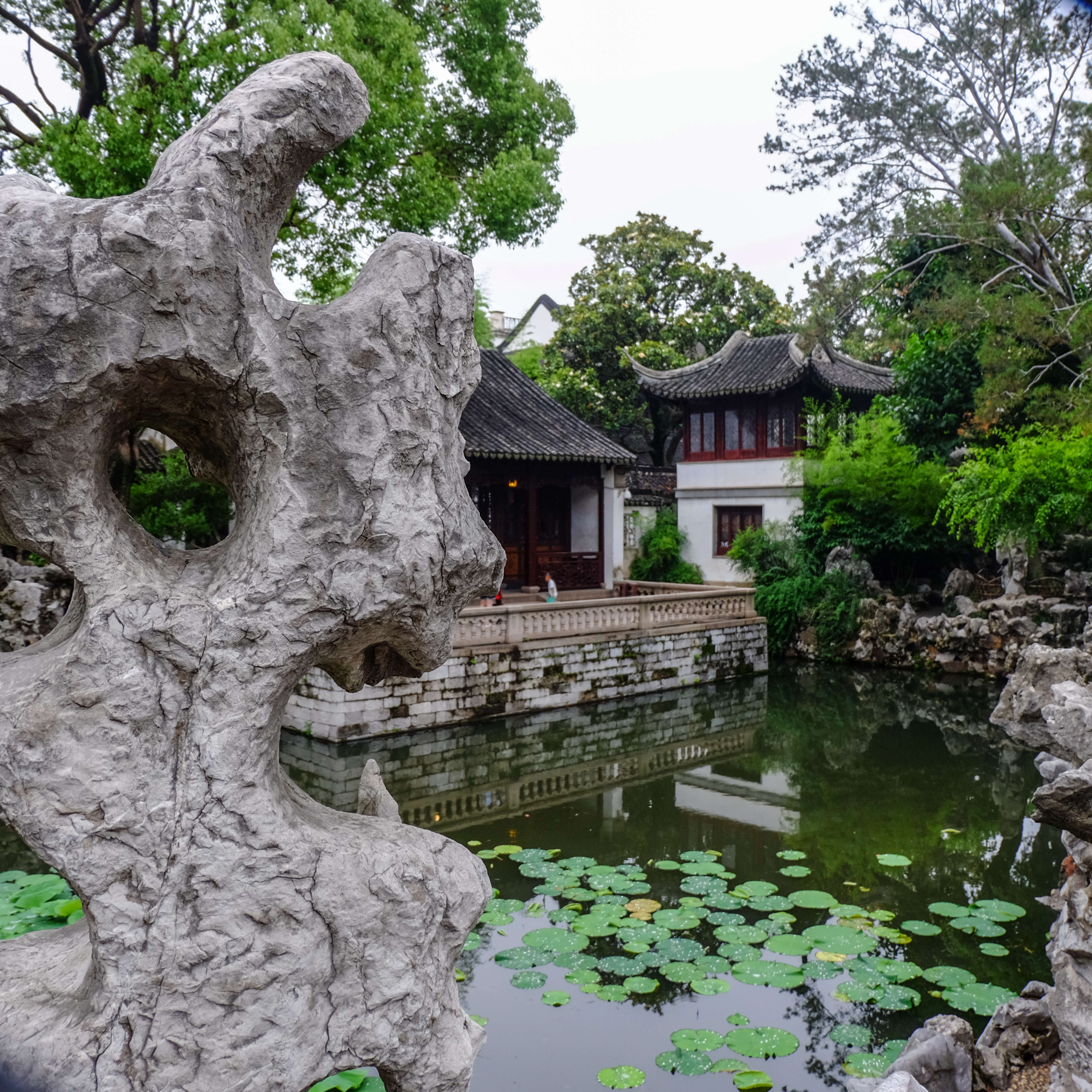
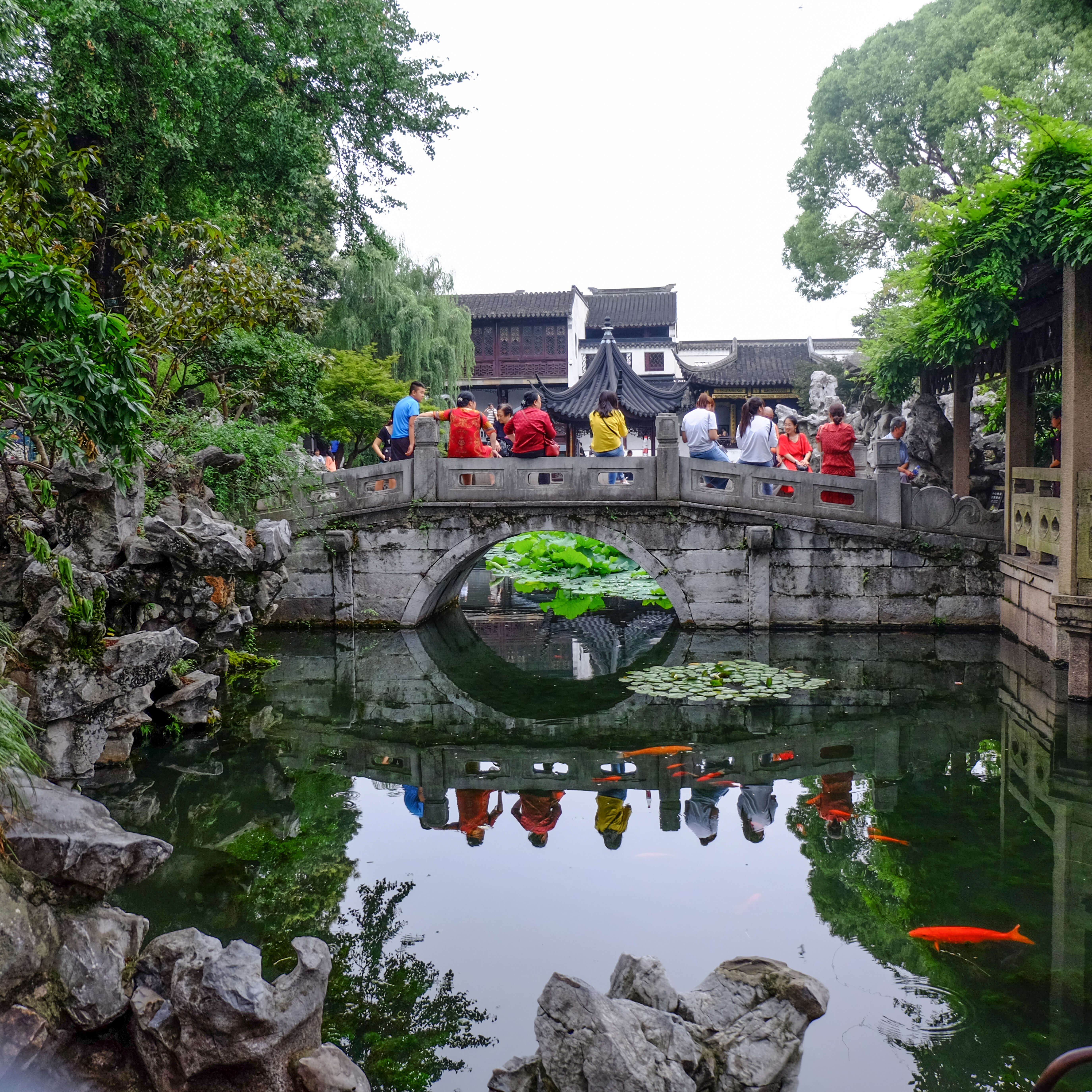
One of the characteristics that make Suzhou special is its canals, which have earned the city the name of “Venice of the East.” A nickname that today seems a bit of an exaggeration, since many of the canals have been drained to build modern roads, and many of the traditional fabric characterized by the picturesque, white washed houses overlooking the water have been modernized and replaced by large, multi-storey buildings, roads, and modern shopping malls.
In the old part of the city there are two main water streets, constantly crowded with tourists: the Pingjiang Lu, which starts from the Garden of the Humble Administrator, and the ShangtangJie, located northwest of the old city, easily accessible with a short taxi ride within the central area.
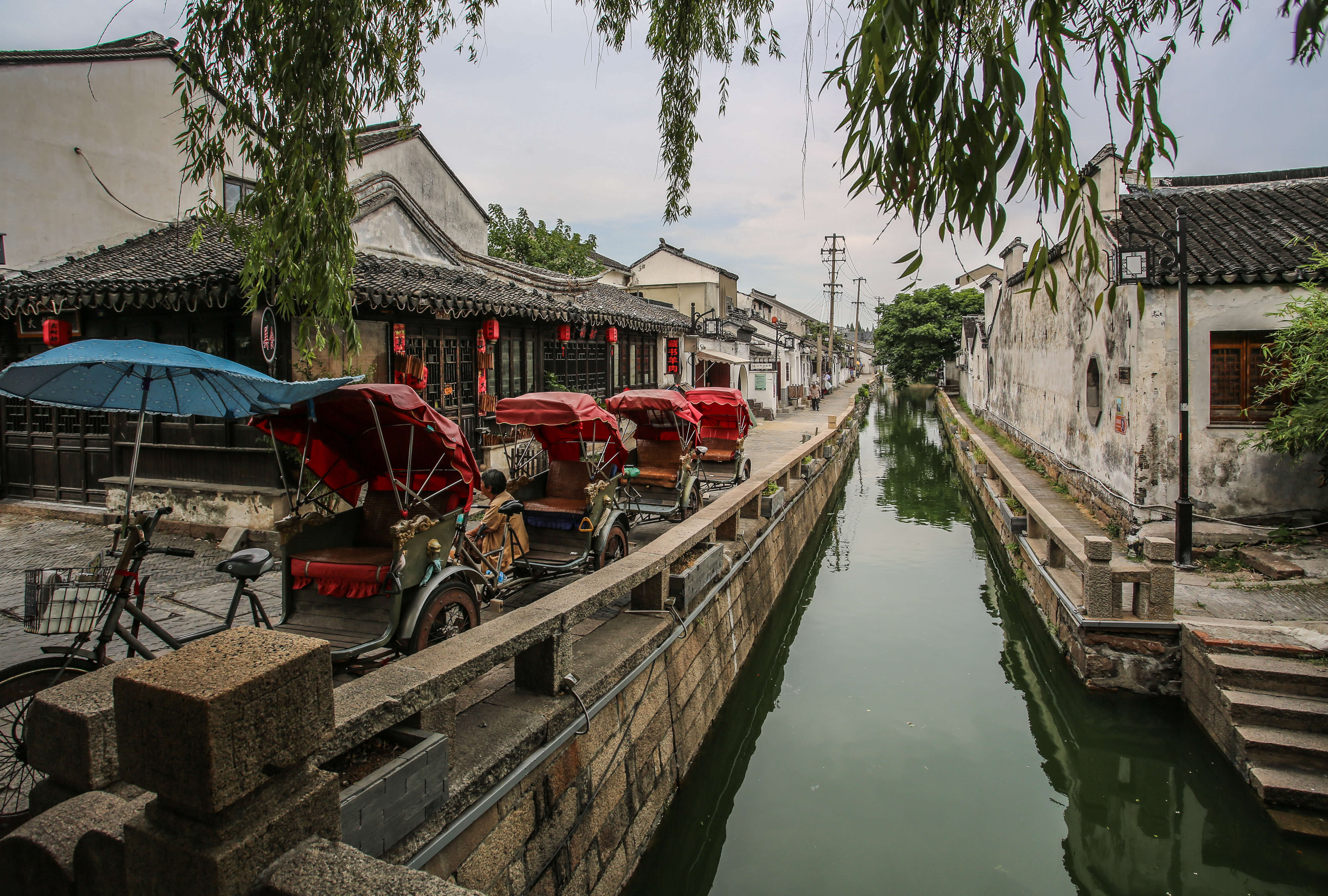
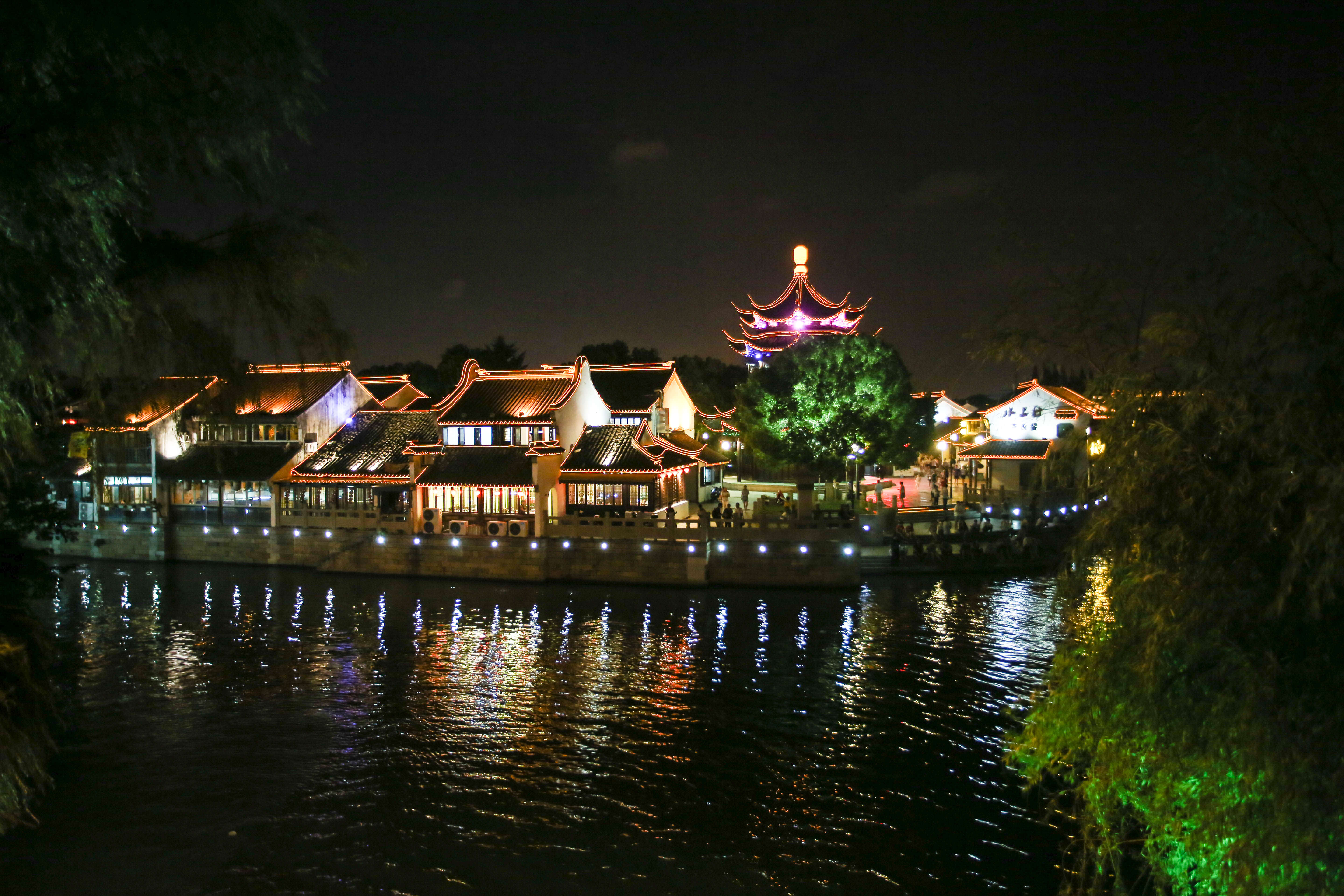
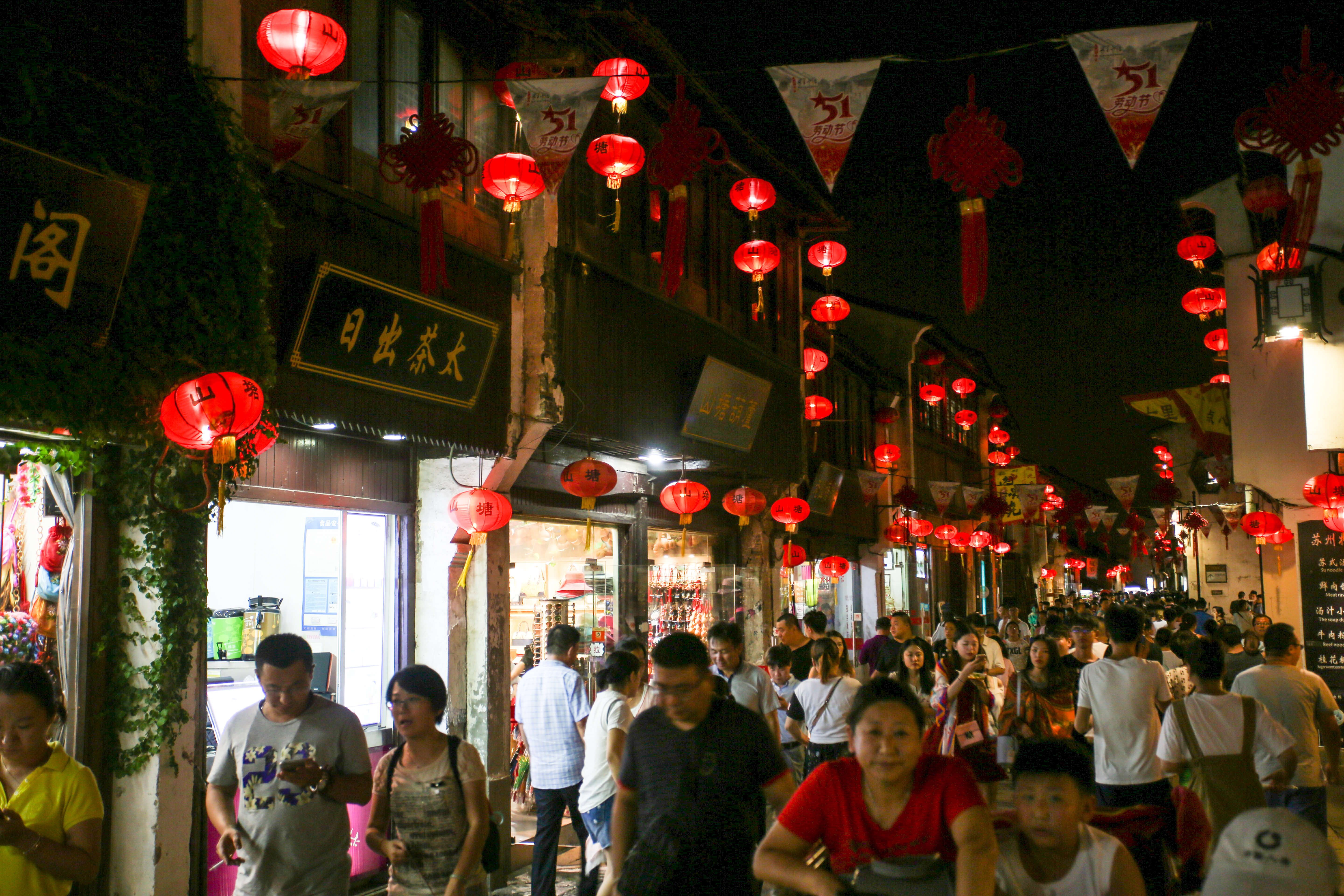
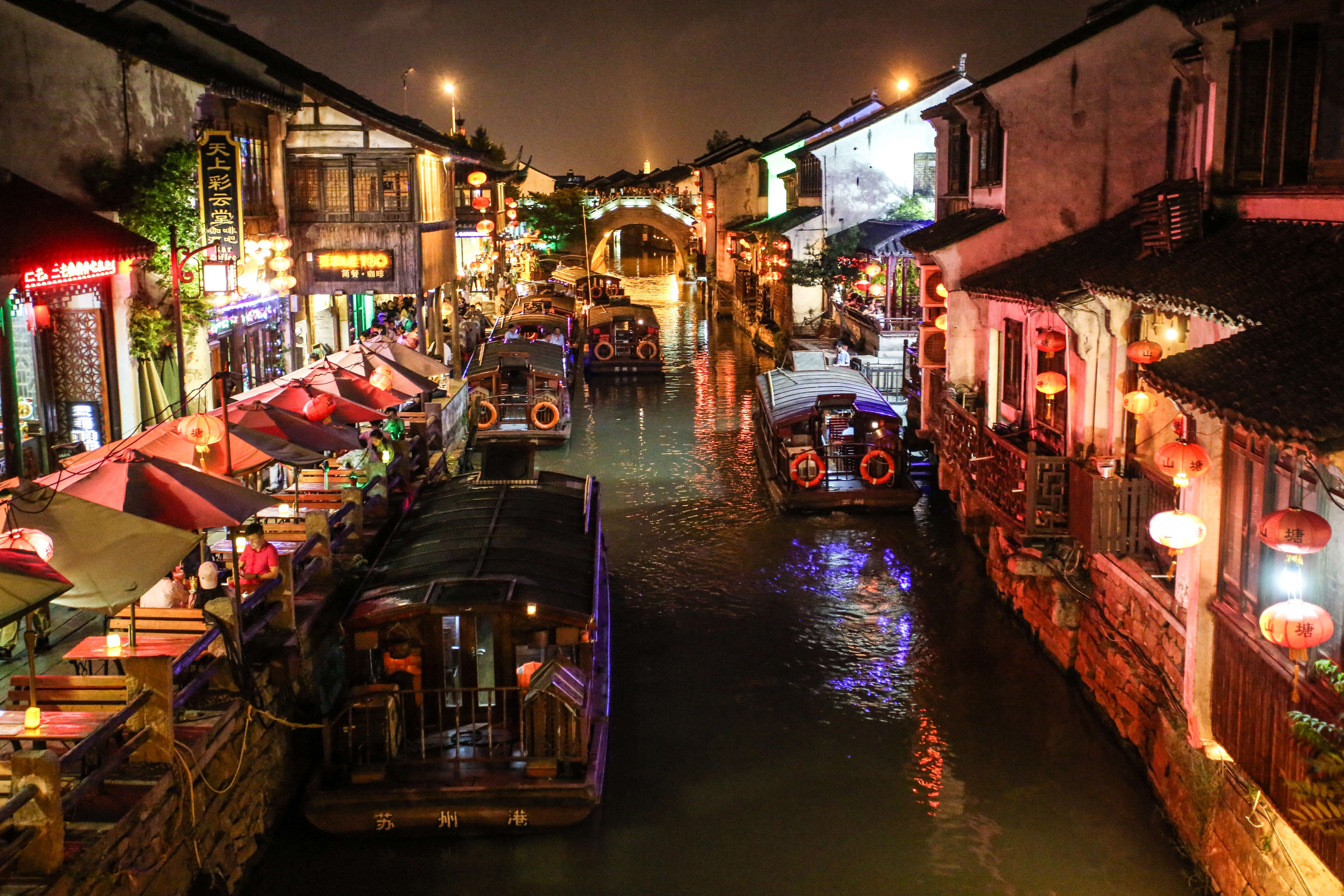
Both charming, especially in the evening, the Pingjiang Lu and the ShangtangJie have nowadays become an extremely commercial and decidedly crowded tourist destination. There are numerous souvenir shops and chains of snack stores and restaurants have opened along the canals in the ancient houses that have been recently restored.
However, it must be admitted that the red lanterns hung on the facades of the buildings and the reflections in the canal broken by the ripples of the small wooden rowboats inspired a nostalgic sense of some of those iconic Chinese cityscapes that travelers dream about when thinking about the traditional China.
To enjoy these picturesque streets without bumping into the crowd, I suggest a stroll along these streets early in the morning before the souvenir shops open.
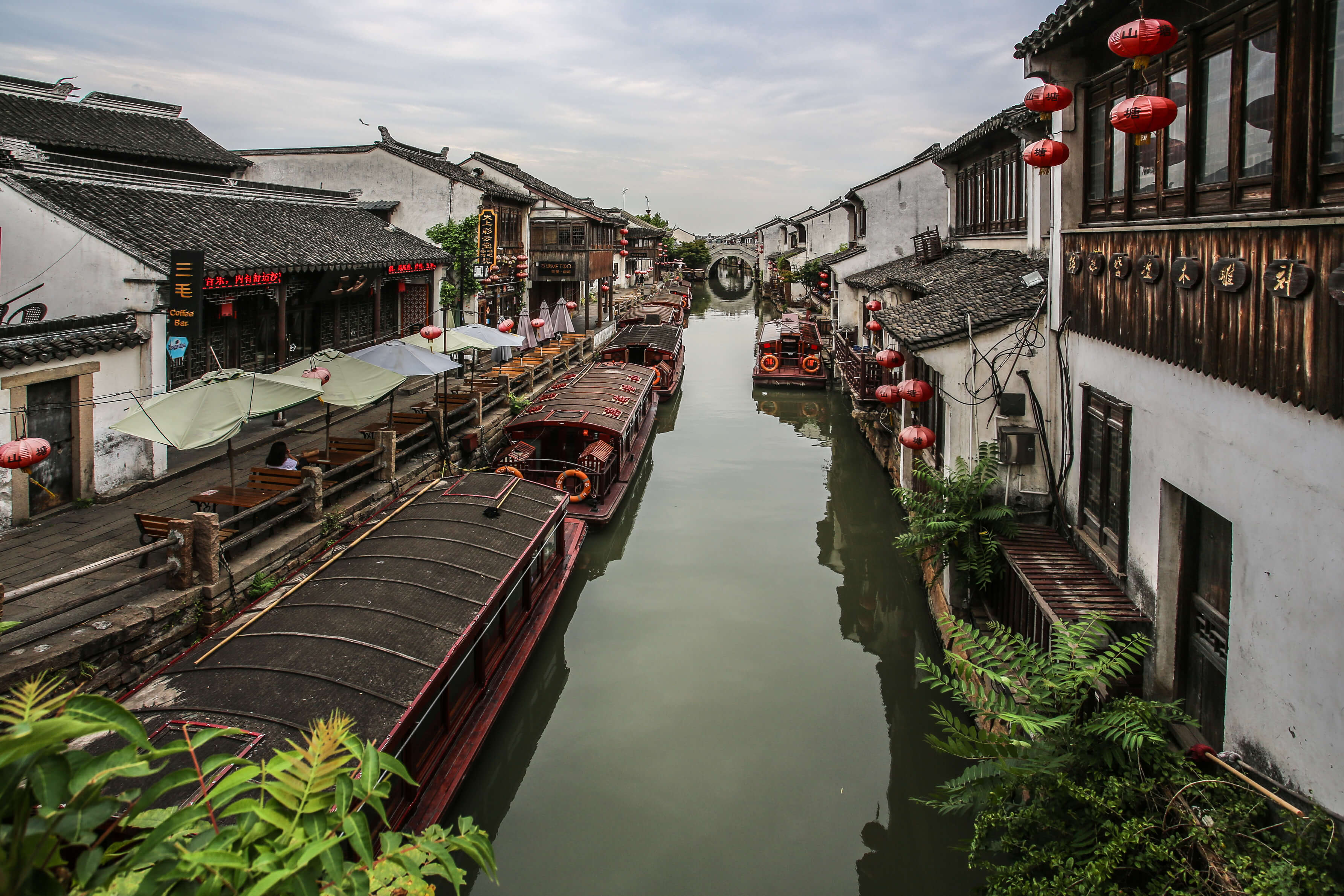
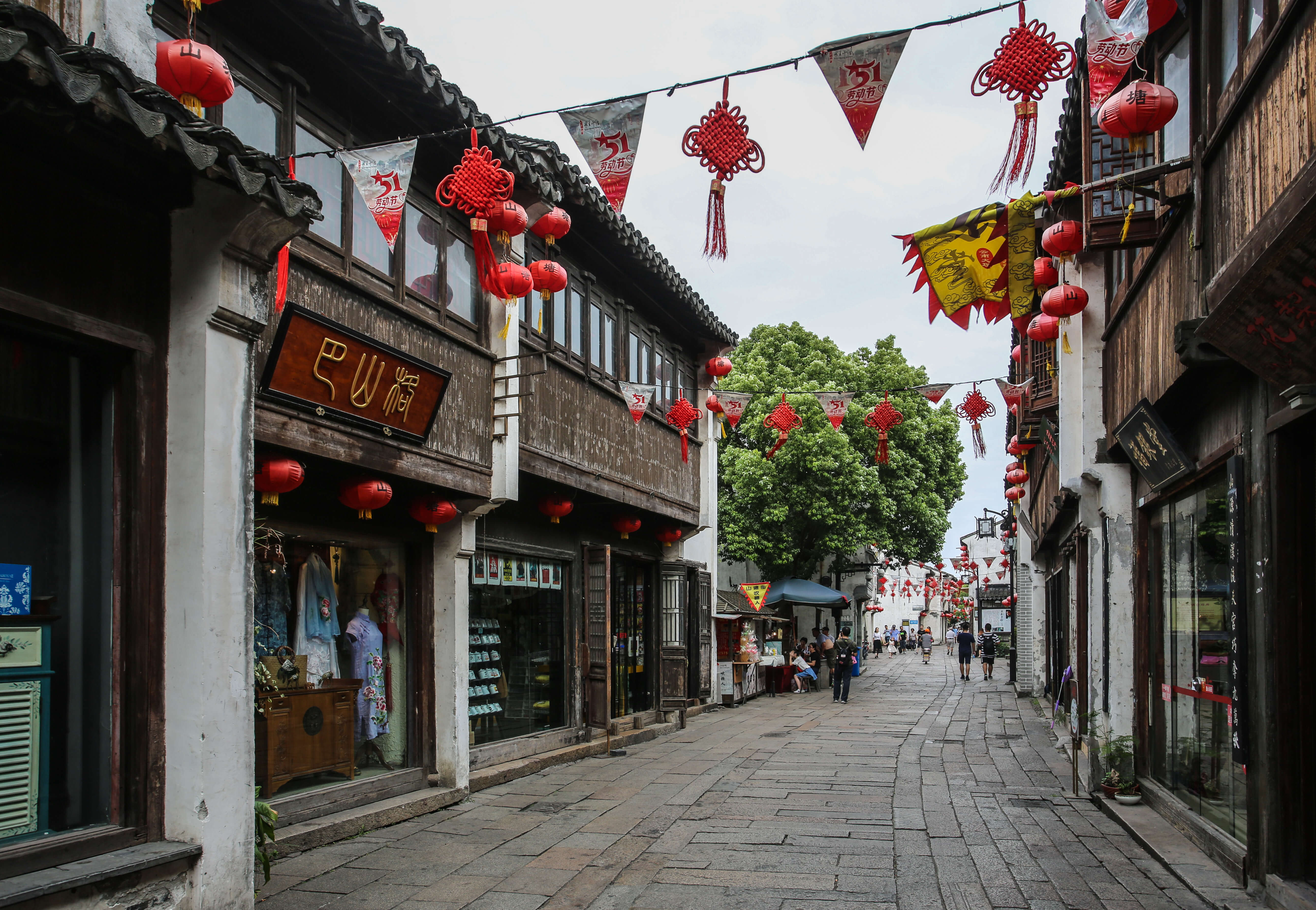
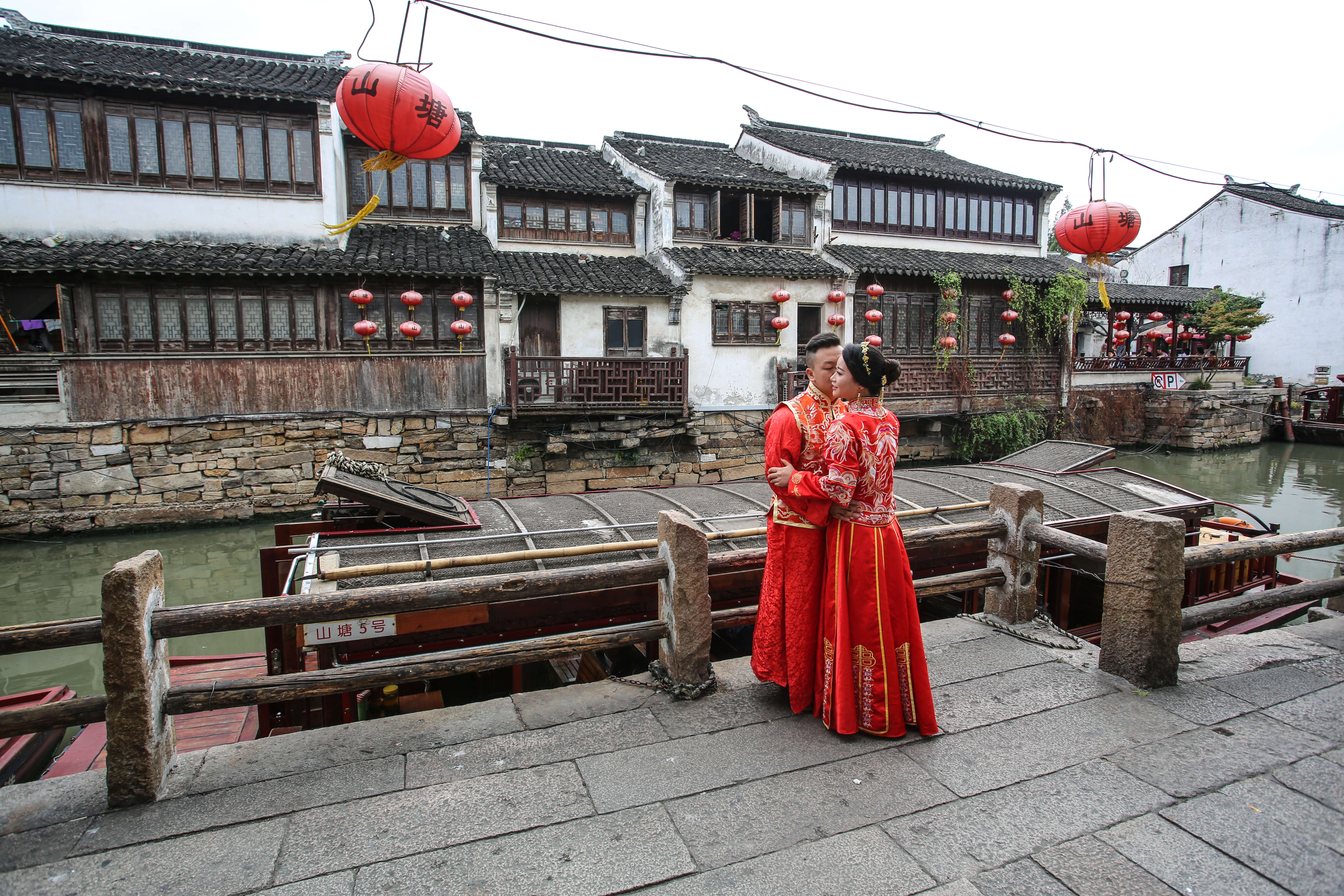
To have a feeling of the old town not affected by commercial tourism, just sneak into the side streets of the Pingjiang Lu, or continue north along the ShangtangJie. Leaving the souvenir shops and the expensive coffee shops behind, it is possible to go into the non-commercialized part of the old town, where the locals carry on their simple lifestyles, and the houses, not yet renovated, have a less polished, but more authentic taste.
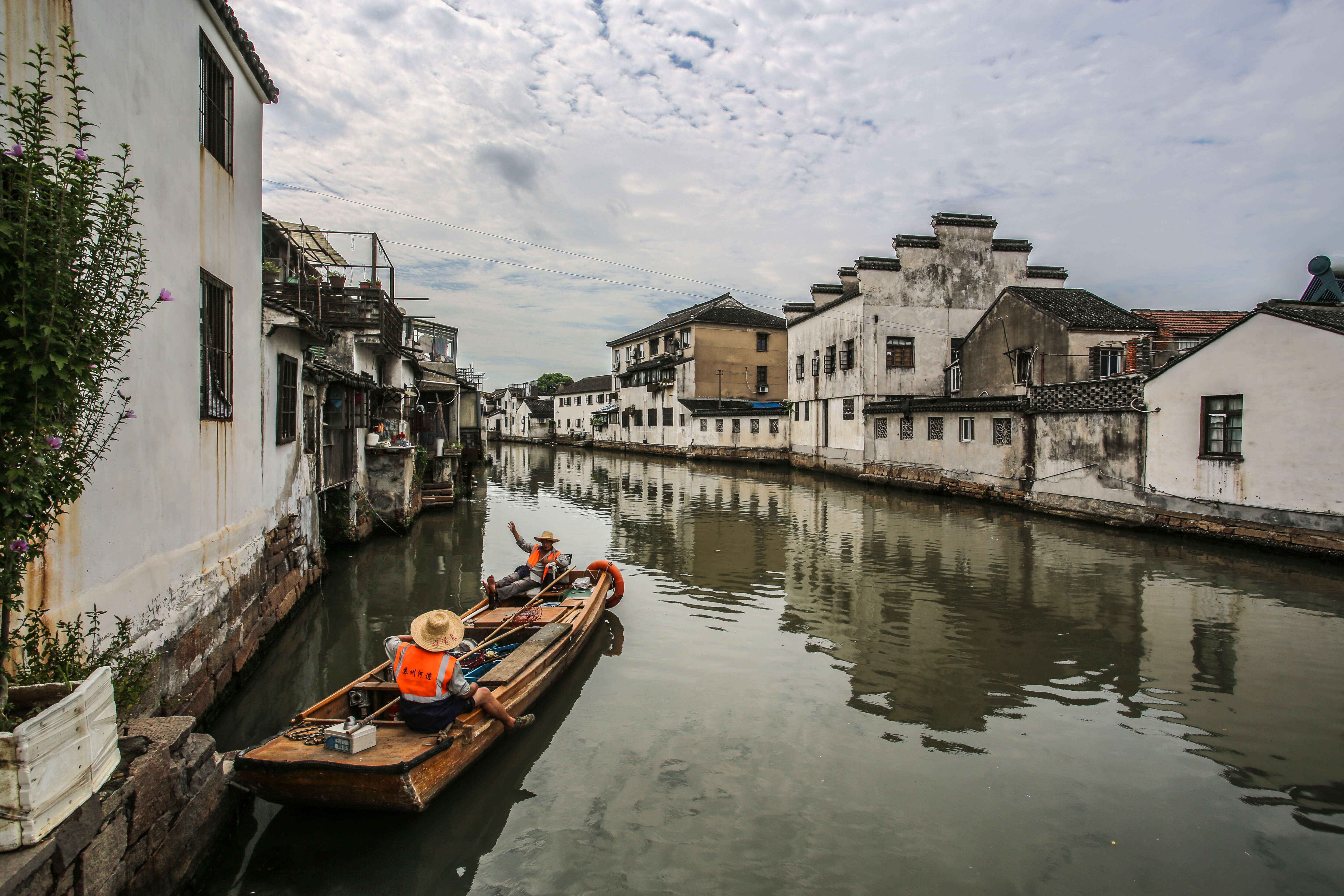
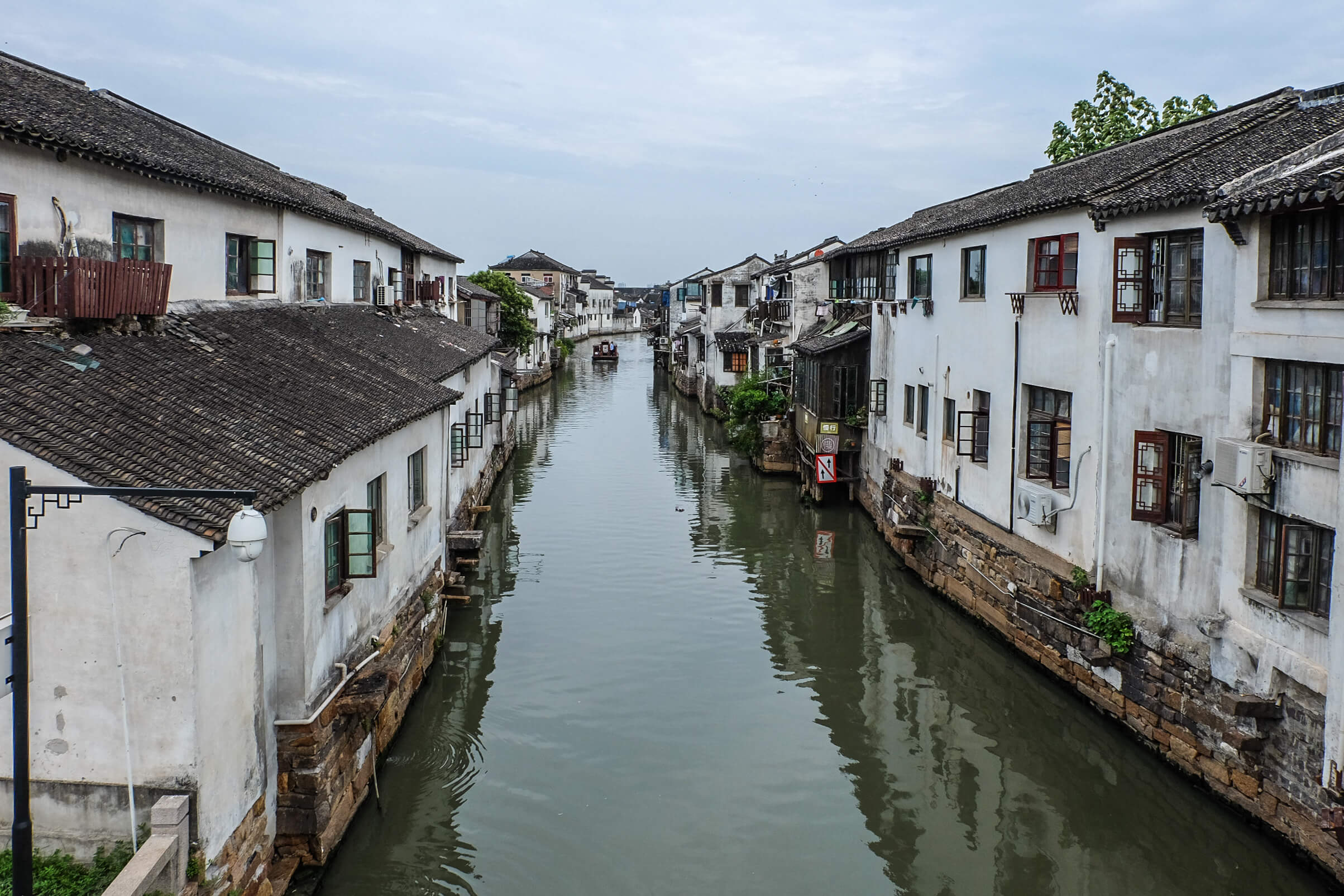
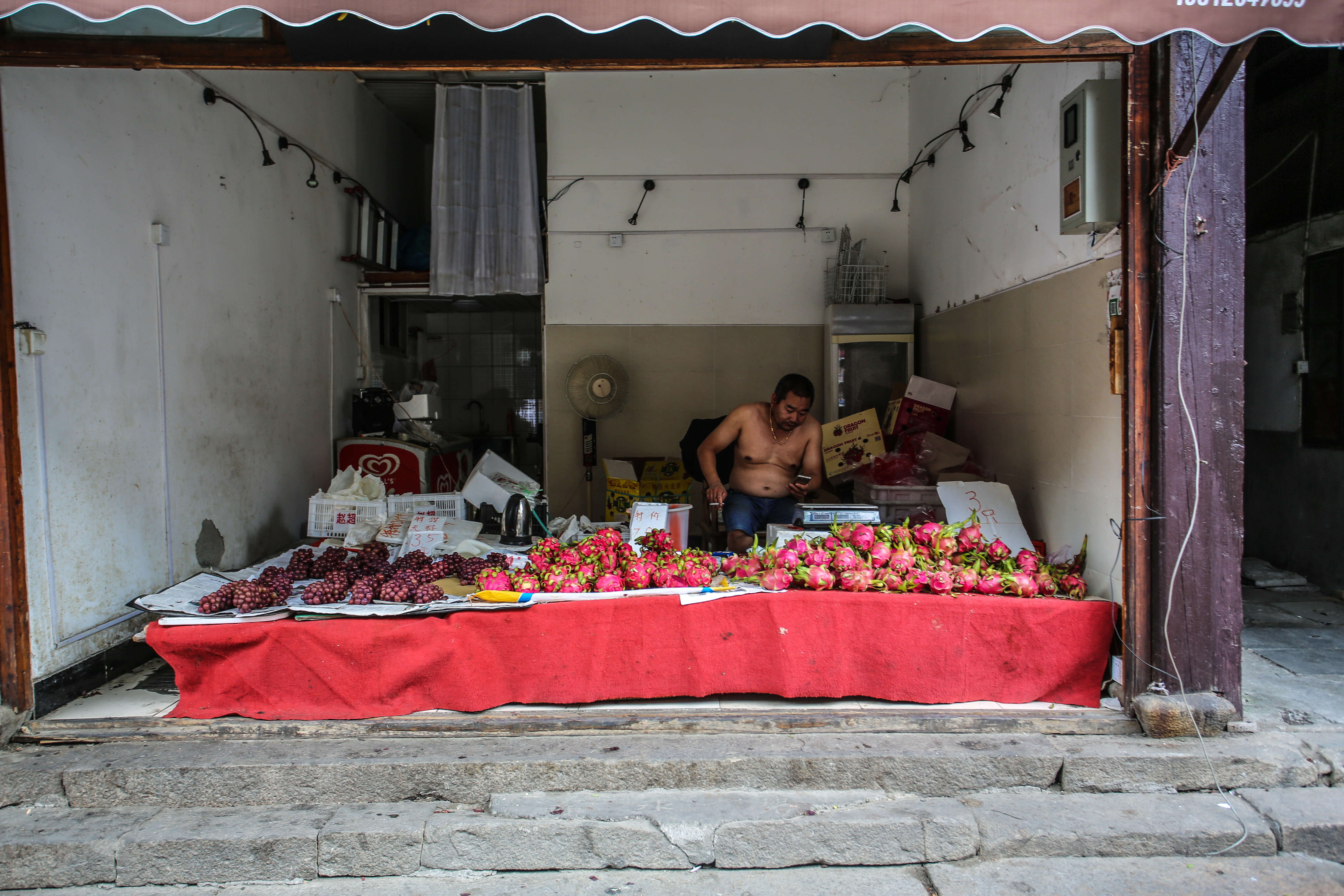
In the city center of Suzhou, traditional architecture lovers can satisfy their thirst for classical architecture by visiting some interesting pagodas.
The most remarkable sites are:
– The Tiger Hill Pagoda (虎 丘塔 – Hŭ qiū tǎ)
– Beisi Pagoda (Pagoda of the Northern Temple) (北寺塔 – Běisì tǎ)
– The Twin Pagodas (罗汉院双塔 – Luóhàn yuàn shuāng tǎ)
TIGER HILL PAGODA
This small and lush hill, located north of Suzhou city center along the Shangtangjie water street, hosts an interesting number of historical sites at its top, some of which are over 2500 years. Among these, the most impressive building is the Tiger Hill Pagoda, one of the most ancient buildings in the city. Built around 960 AD during the Tang dynasty, it has been named the “Leaning Tower of China,” due to it’s slight tilt to the northwest.
Ticket price: 80 rmb
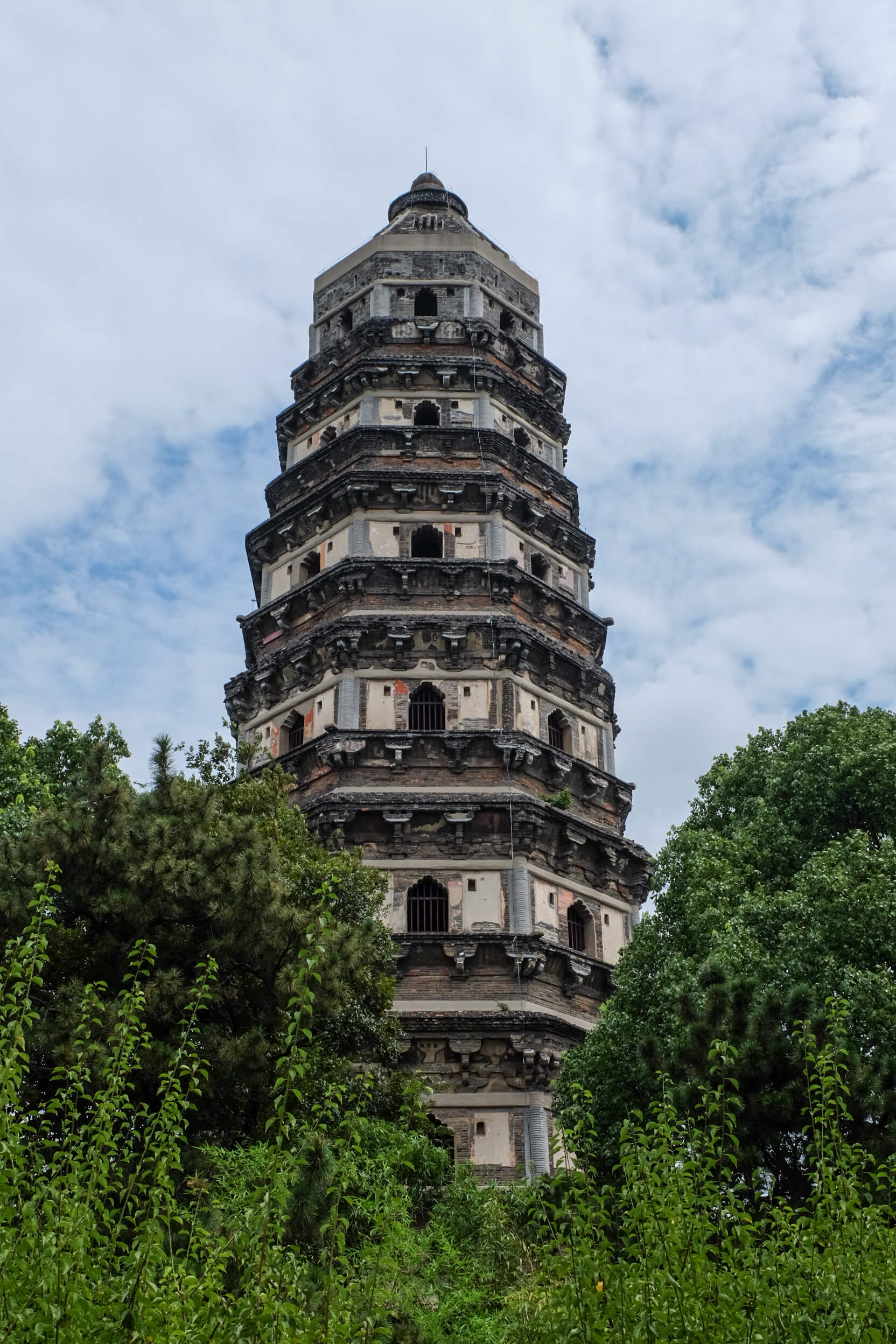
BEISI PAGODA (NORTH TEMPLE PAGODA)
Located inside the Bao’en Temple, this impressive building boasts more than 900 years of traditional history. Thanks to its position between the old city walls, the Humble Administrator Garden, and some of the old traditional Suzhou houses, it’s worth climbing up to the top (if open) to get a panoramic view of the neighborhood.
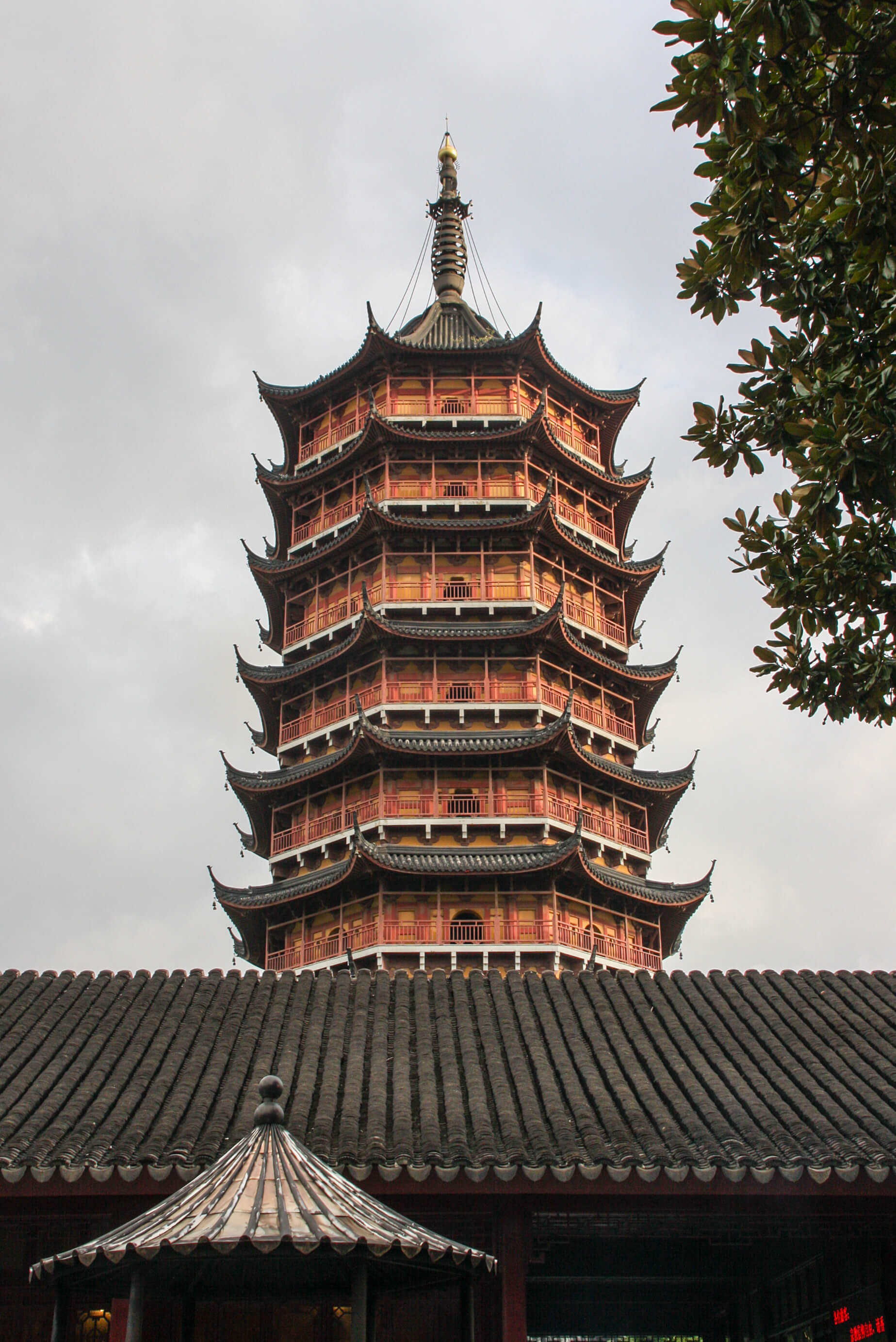
Located inside the Bao’en Temple, this impressive building boasts more than 900 years of traditional history. Thanks to its position between the old city walls, the Humble Administrator Garden, and some of the old traditional Suzhou houses, it’s worth climbing up to the top (if open) to get a panoramic view of the neighborhood.
THE TWIN PAGODAS
Unfortunately I could not personally visit the Twin Pagodas. Arriving at what I thought was the opening time (9 am-5pm), it was my bad luck to discover the site closed… Next time!
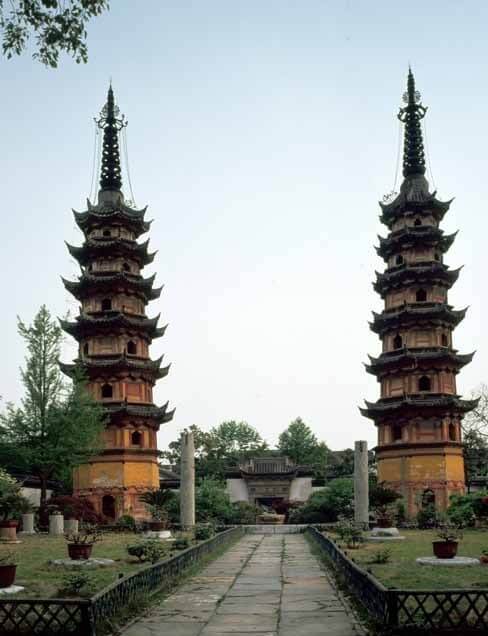
Located adjacent to the Humble Administrator Garden, The Suzhou museum is divided into 2 parts: the former residence of Prince Zhong (XIX century), and the new contemporary museum, a true masterpiece of architecture designed by the Hong Kong Architect Ieoh Ming Pei. Not a traditional building, but a contemporary personal reinterpretation of the vernacular style, the building designed by Pei exhibits the essence of the local Suzhou architecture, while evolving it to a contemporary and sophisticated form.
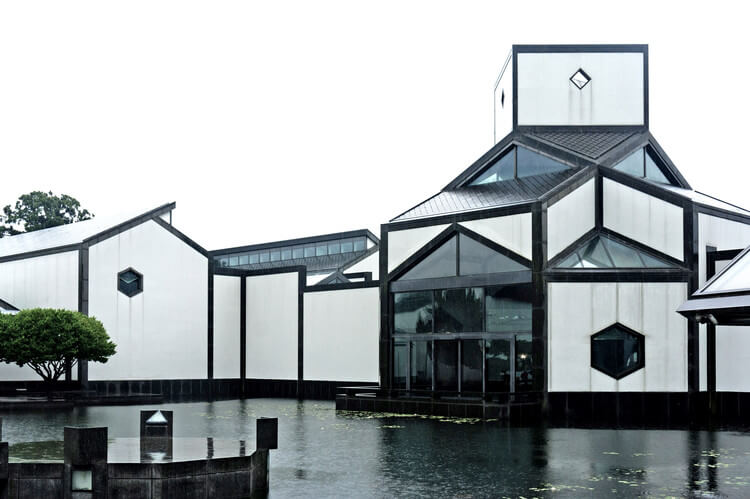
To enter the museum, it is necessary to book online the entrance at least one day in advance. At the museum, it is possible to make a reservation scanning a QR code, but in any case, the reservation will be valid from the following day.
Visit this link to book your online ticket!
Suzhou is a modern metropolis that houses over 10 million inhabitants and is served by four railway stations. It’s easily reachable directly from many of the major cities in eastern China.
Thanks to the high speed railway, it is possible to reach nearby Shanghai in just 30 minutes, while Beijing is only about 5 hours away by bullet train.
Suzhou does not have its own airport, so if you want to reach the city by plane you need to use the nearby Shanghai Pudong and Hongqiao airports (about 1 hour away by car).
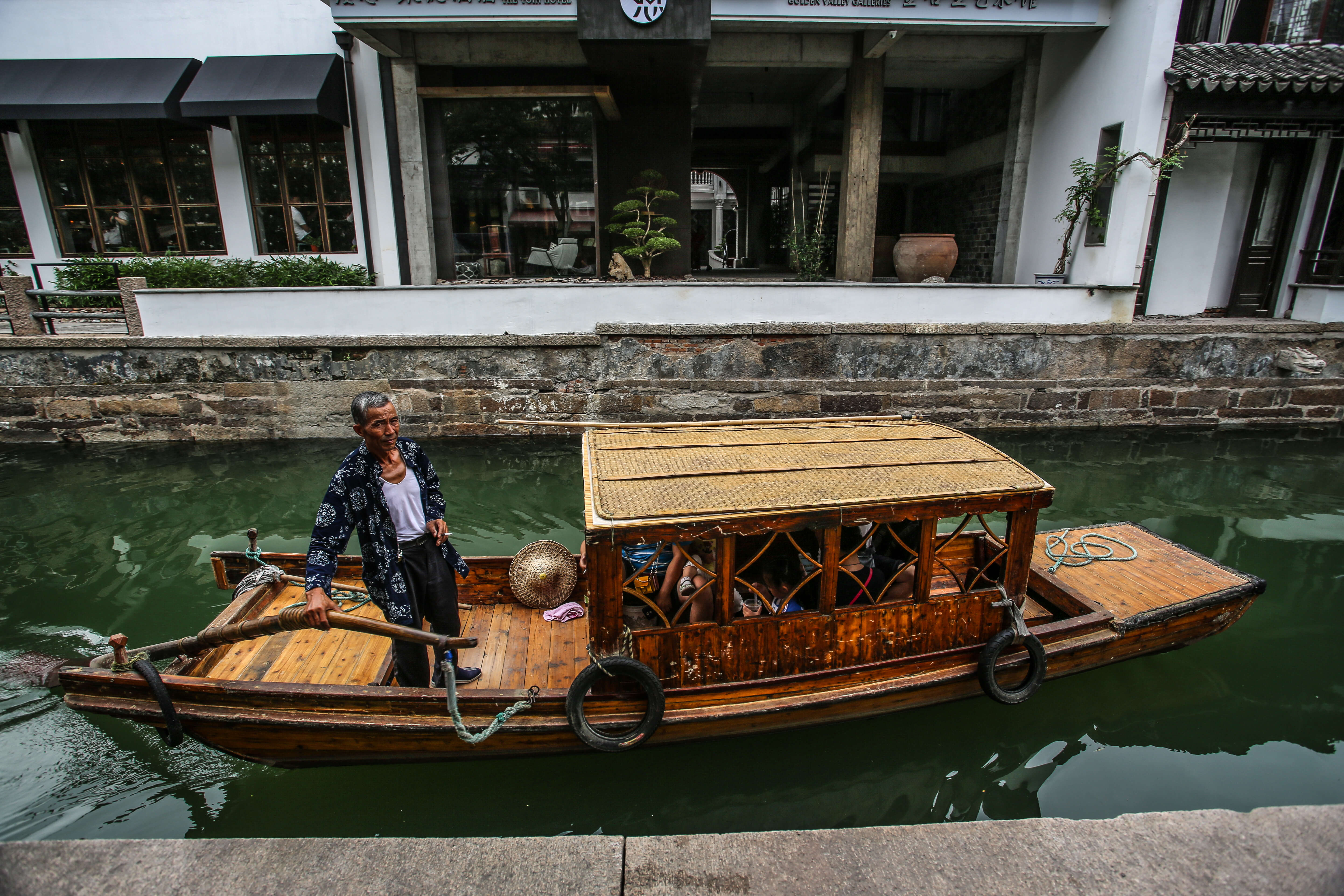
Suzhou is well connected by bus with many of the small water towns scattered in the countryside around the city, which are a great alternative for a day trip.
The best (but also most crowded) time to visit the city and its gardens is spring and autumn, when the temperatures are still pleasant and the colors of nature make the gardens particularly appealing. In summer, on the other hand, the humid heat becomes torrid, often reaching up to 40 ° during the hottest hours of the day, making the visit to the outdoors decidedly more sweltering and less enjoyable.
Having said that, a generally wise suggestion to follow when traveling in China is to try to avoid National Holidays, especially in the most famous tourist spots.
Check this website for a complete calendar of the Chinese National Holidays!
The countryside around Suzhou, characterized by plenty of small lakes and rivers, has been home to a great number of little water towns.
The most famous are Wuzhen, Tongli and Zhujiajao, easily accessible with a bus ride from Suzhou Railway station.
Some of these have recently been turned into commercial tourist destinations (such as Wuzhen), and filled with souvenir shops and food chains.
Others, less popular, or not yet touched by mass tourism, maintain a traditional and relaxed lifestyle, where it still is possible to walk along the canals and enjoy the architecture and lifestyle of a lost time.
If you happen to be in Suzhou, visiting one of these Water Towns is a great way to spend a day trip (or half day trip) to relax from the hustle and bustle of the city, and admire a beautiful part of traditional China before it forever disappears.
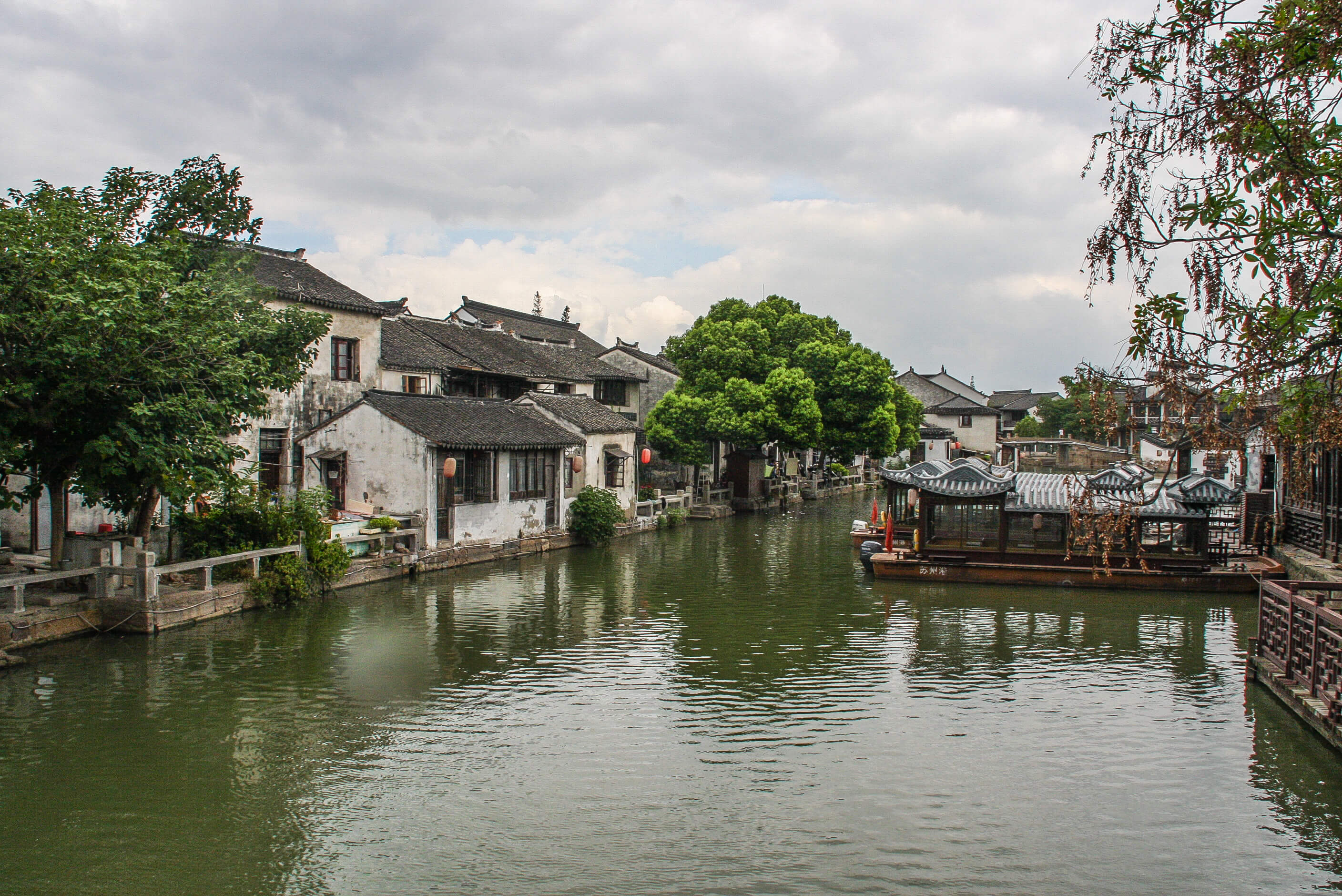
In particular, I personally loved the small water town of Tongli, which I have visited twice over the years.
It is one of the most well-known and accessible water towns, and it has a few restaurants and souvenir shops,
but the number of visitors who make it there is decidedly limited, allowing a quiet and enjoyable stroll along its canals and alleys to enjoy its well preserved traditional architecture.
Entrance ticket: 100 rmb including the scenic spots
How to get there: take the direct bus from North Square of Suzhou Railway Station. The ride is about1 hour, bus ticket should be around 8 rmb.
Today is even possible to reach Tongli by subway from Suzhou, getting out at Tongli Suwbay Station.
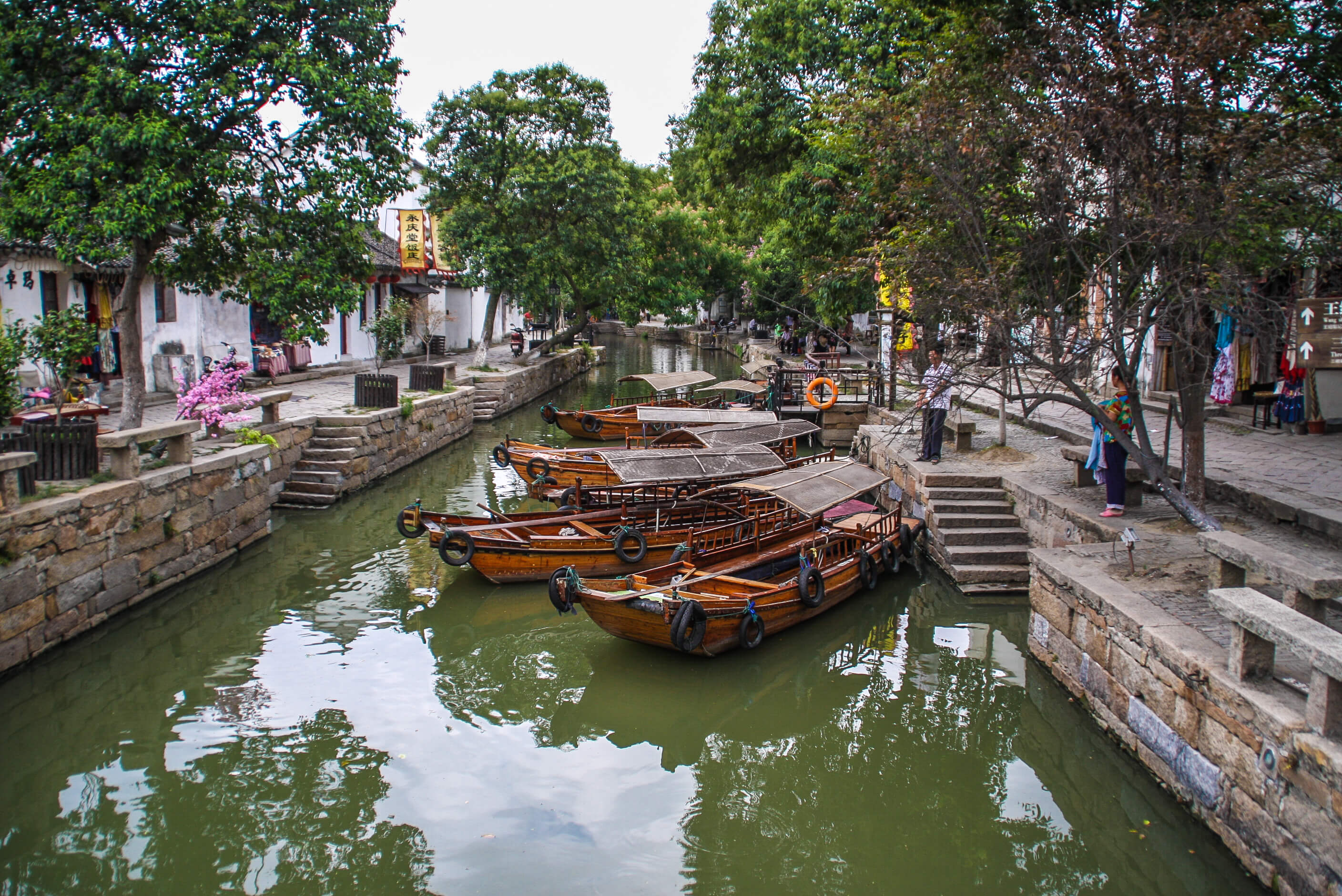
Advertised as an idyll by posters and postcards, the truth is that Suzhou is now a modern metropolis, and this modernization has affected much of it’s old city, limiting the charm of the vernacular architecture and the traditional lifestyle to only in a few circumscribed (and now kind of touristy) areas.
Given this premise, I believe that a weekend in Suzhou is worth the time, especially if combined with a day trip to one of the smaller Water Towns of the area, where the traditional atmosphere is still preserved and enjoyable.
Suzhou is today a modern city which hustle and bustle disappears once you enter one of its gardens, an oasis of beauty and artistic expression at the highest level, a must-see to fully appreciate the classical Chinese culture.
For a traditional architecture lover, a trip to China cannot be considered complete without a visit to a classical Chinese garden, and without a doubt Suzhou is home to the finest examples of this art form.
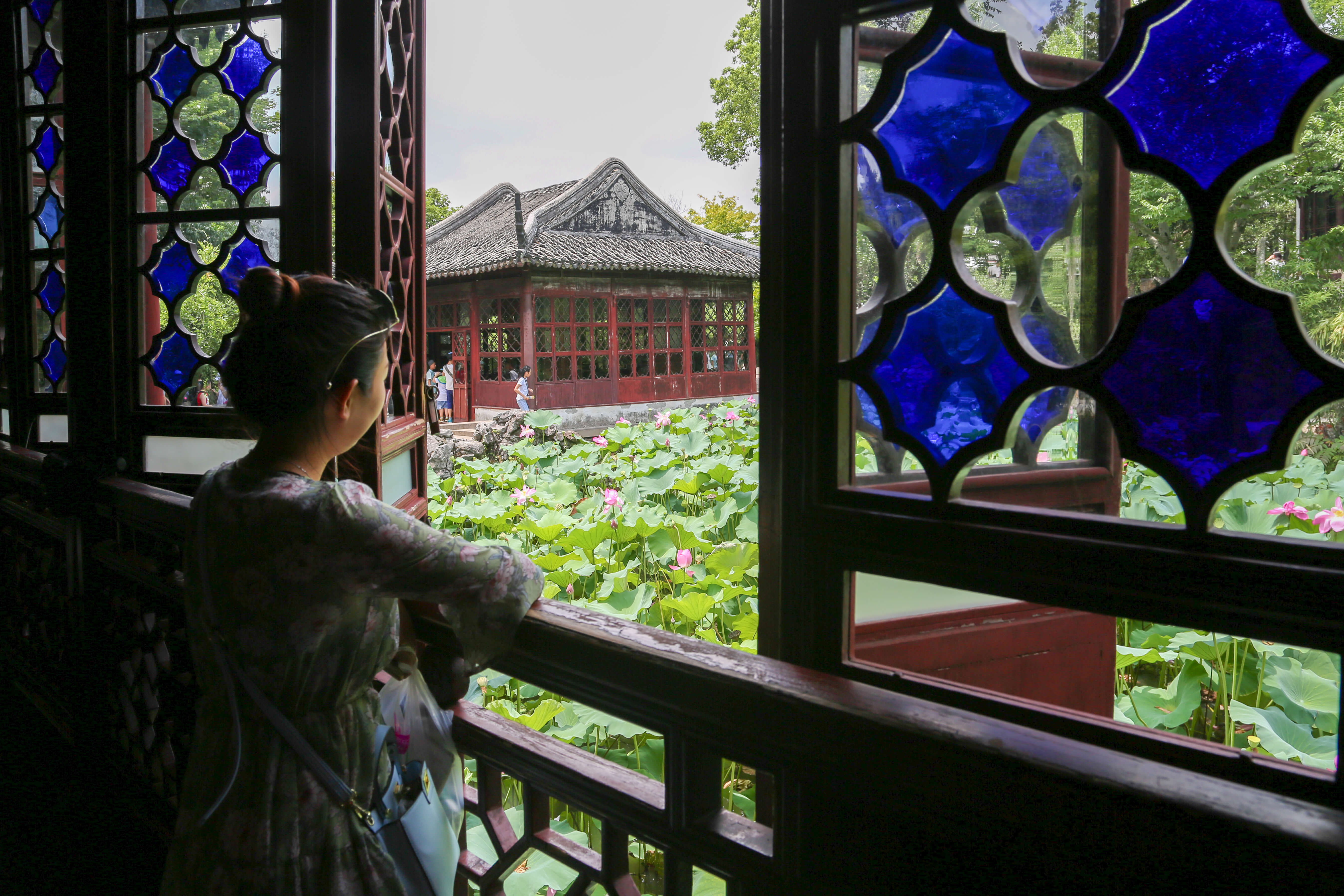
IF YOU FOUND THIS POST INTERESTING AND INSPIRING, HELP ME TO SHARE IT WITH OTHER TRAVELERS!
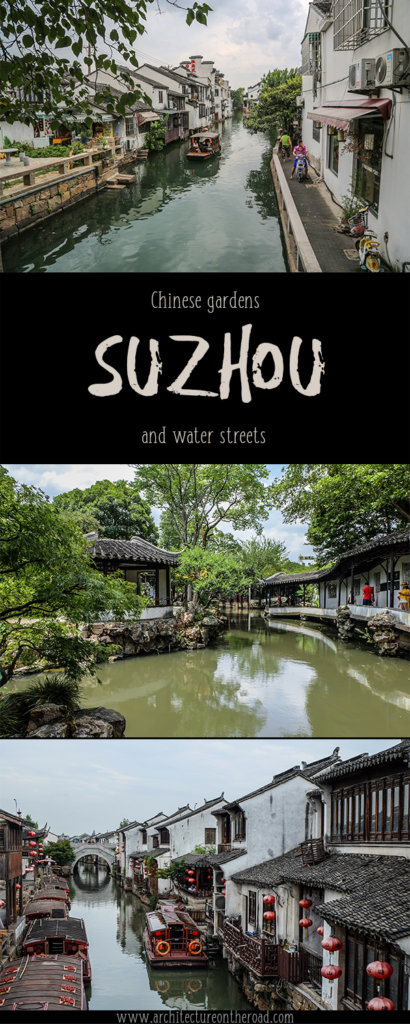
FRom the same province
stay tuned !
search for a destination
latest travel itineraries
latest CHINA articles
Text and pictures by
Architecture on the Road ©
Architecture on the Road
All rights reserved
All photographs on this site were taken and are owned by me (unless credited otherwise).
If you would like to use some of these photos for editorial or commercial purposes, many of these are available on Shutterstock (click the link below). Otherwise, please contact me on Instagram, Facebook, or by email.
Do not use my pictures without my written consent. Thank you!
